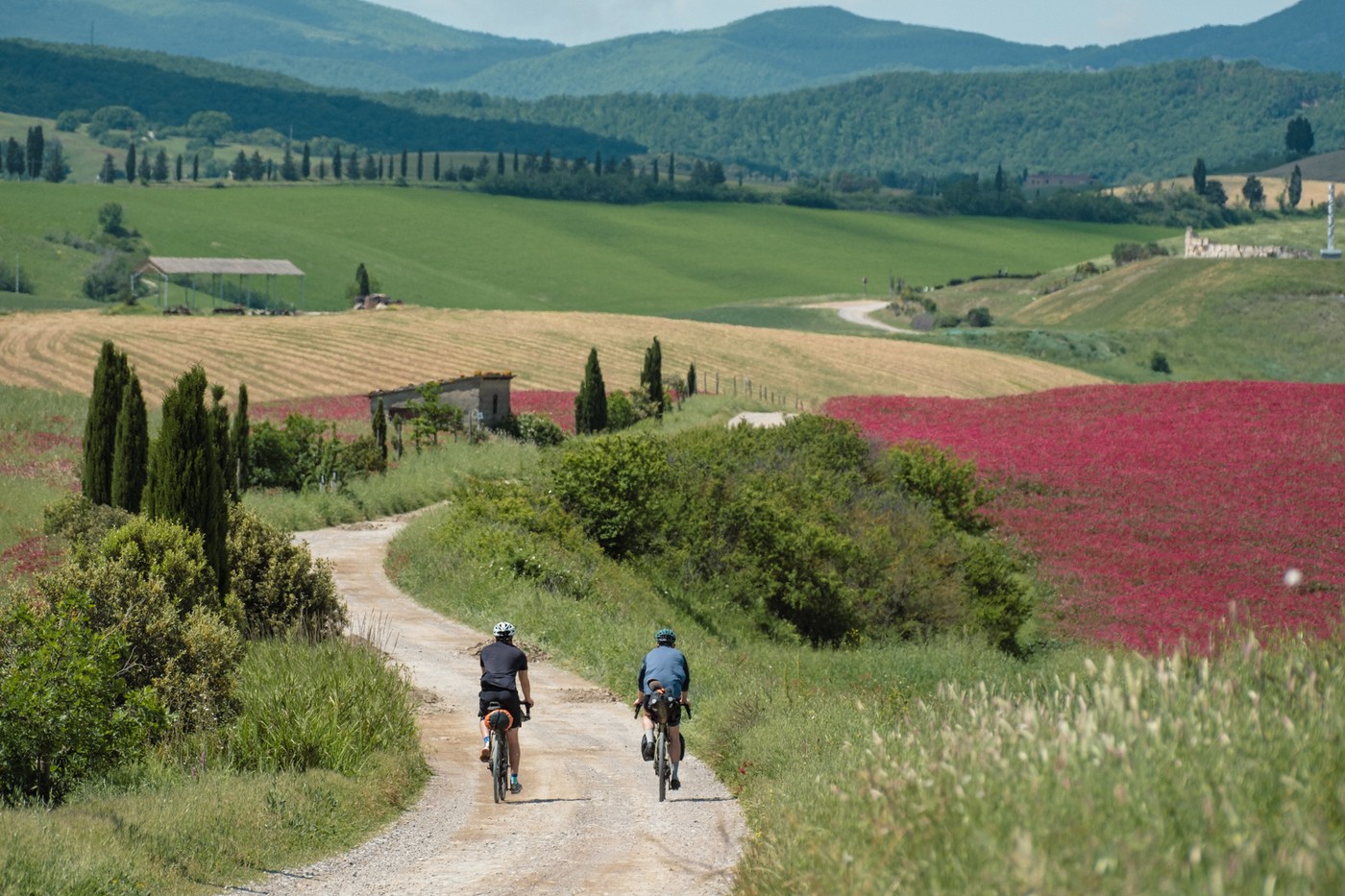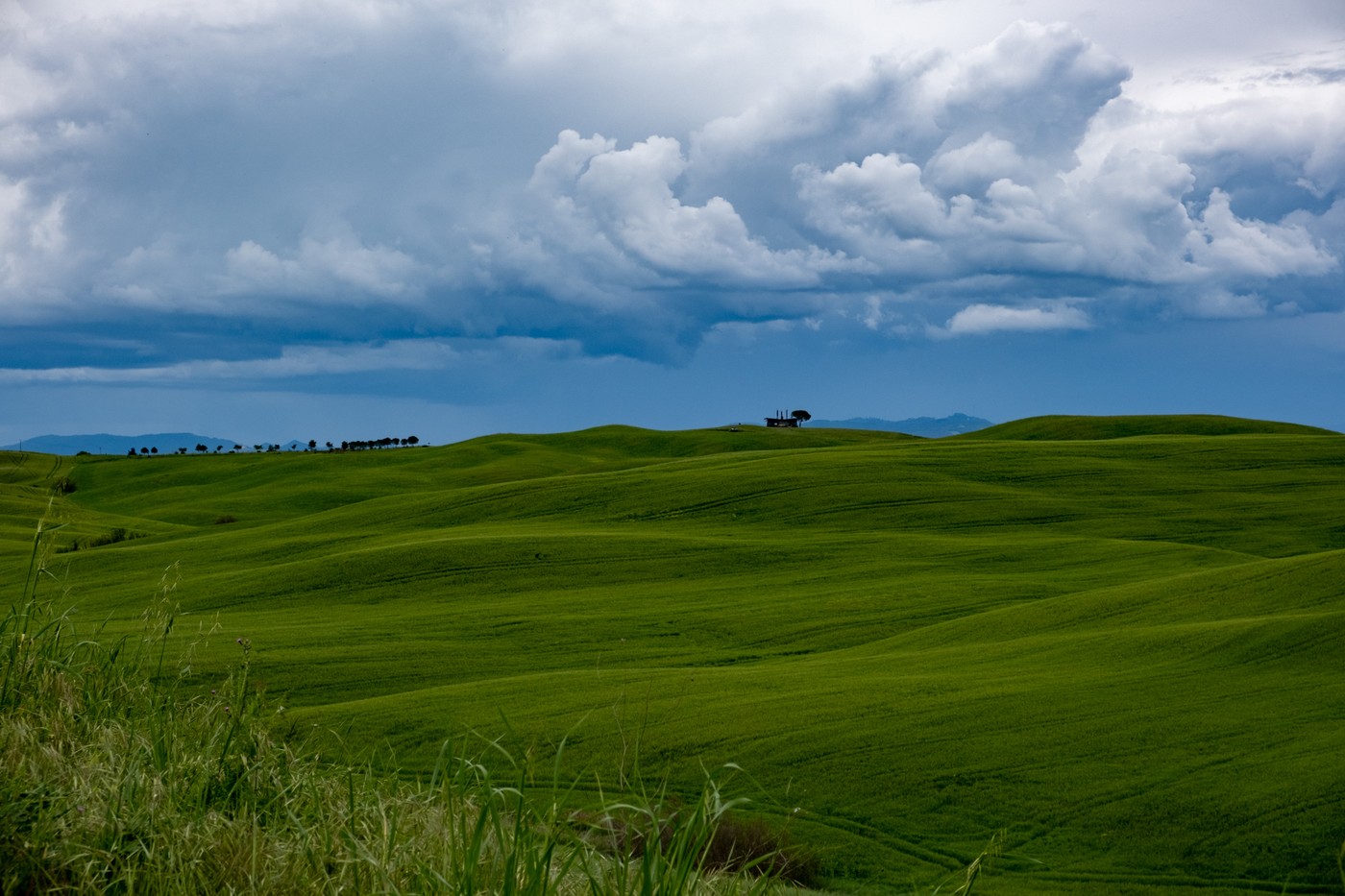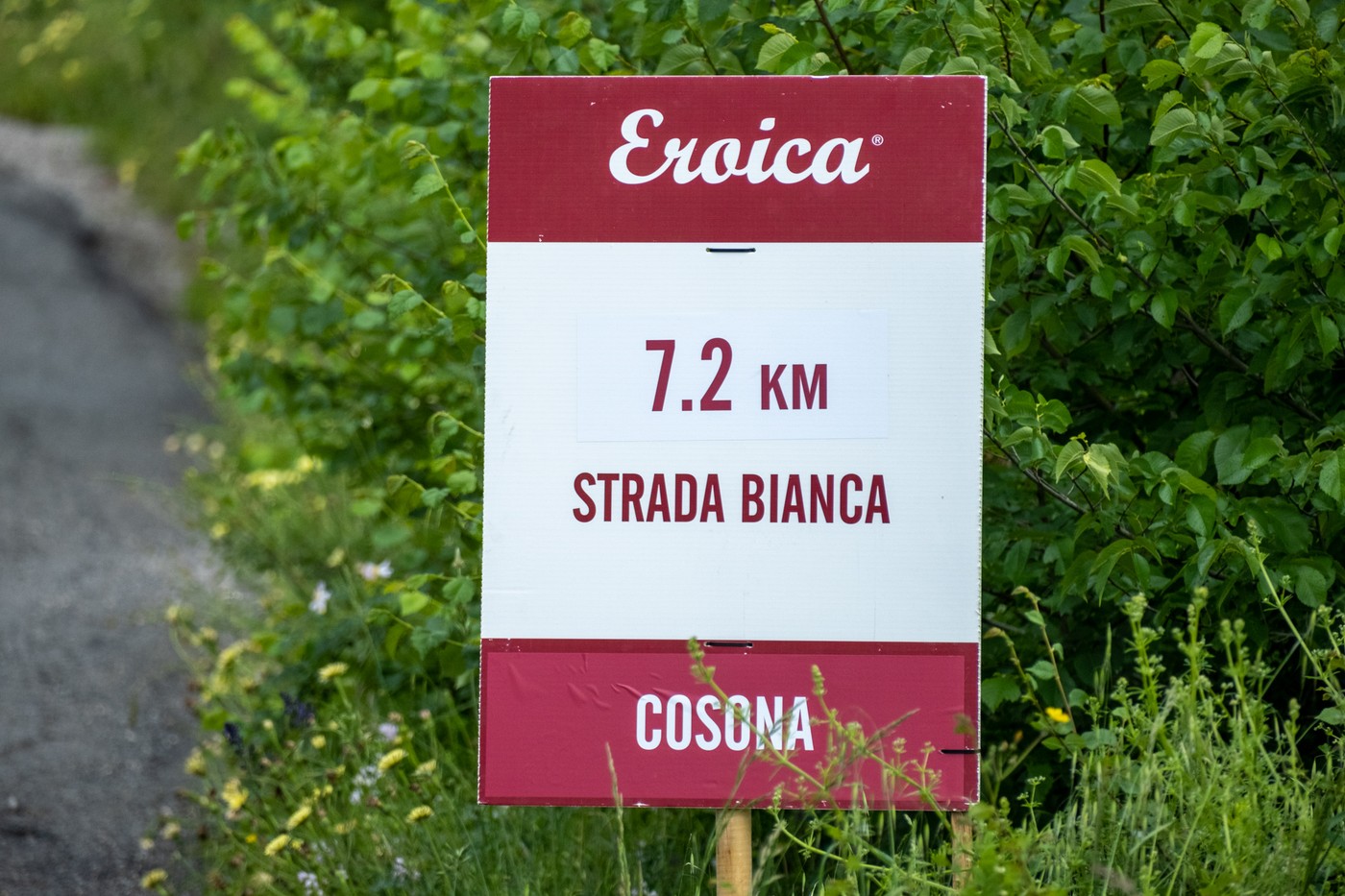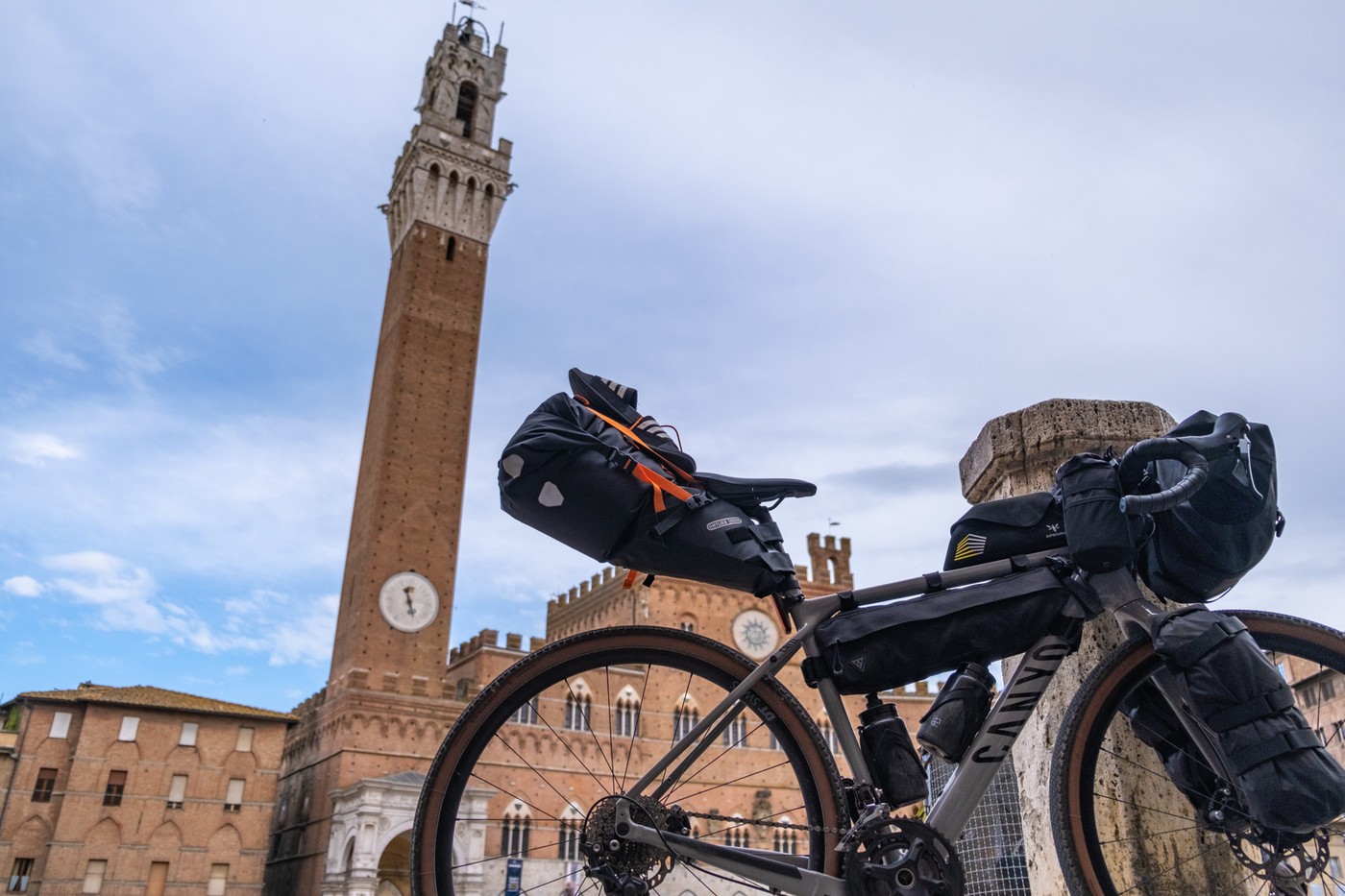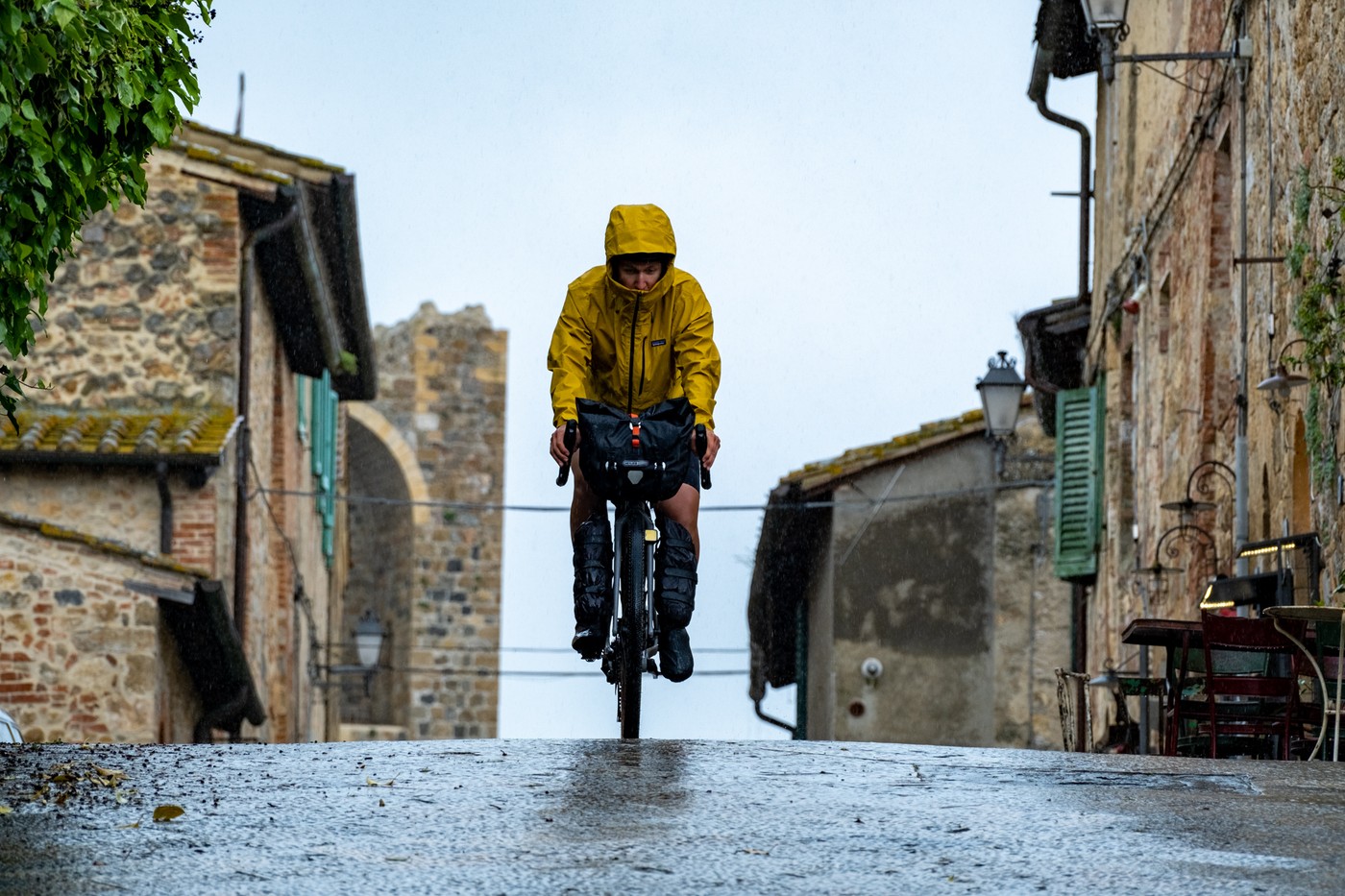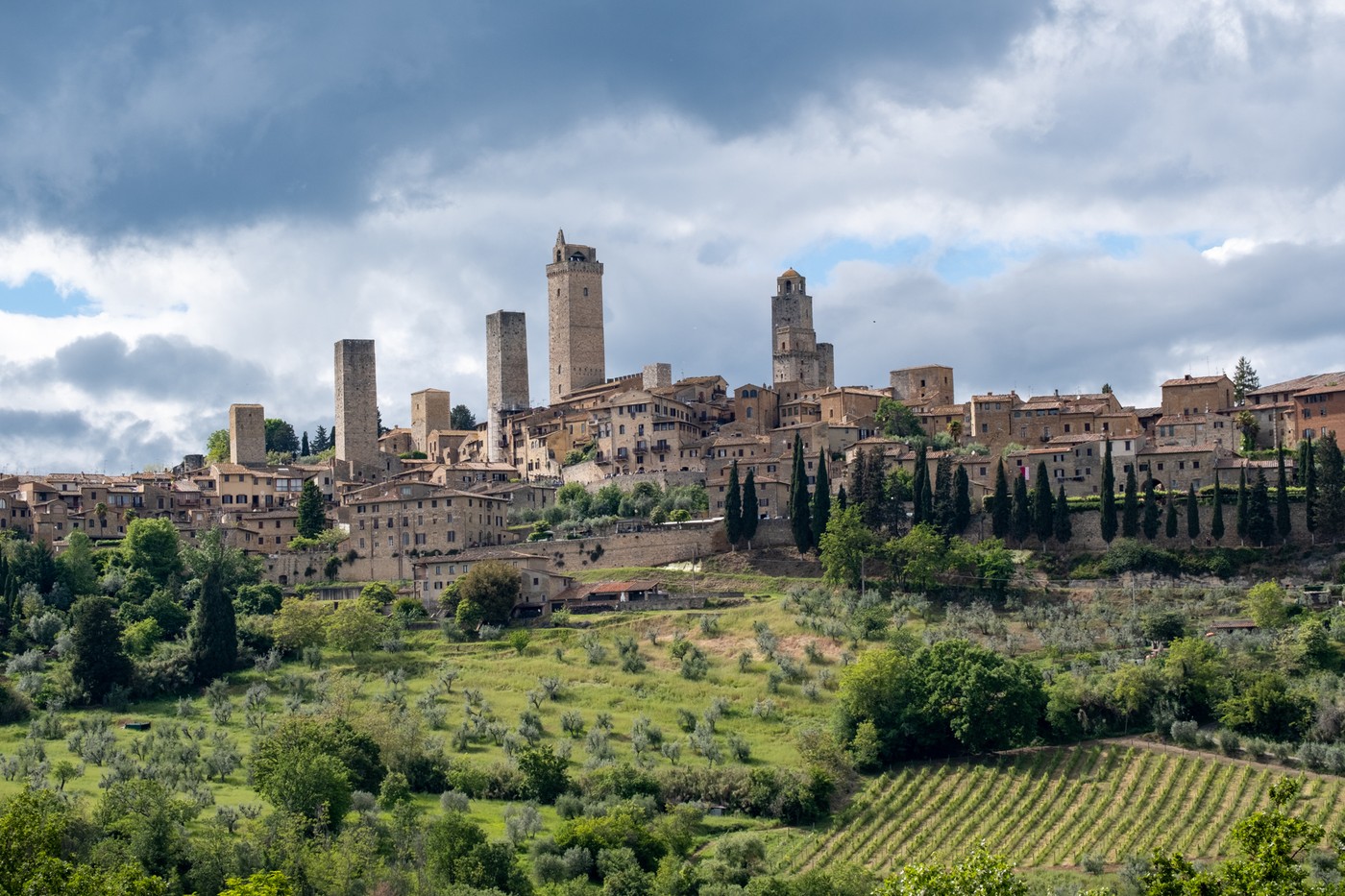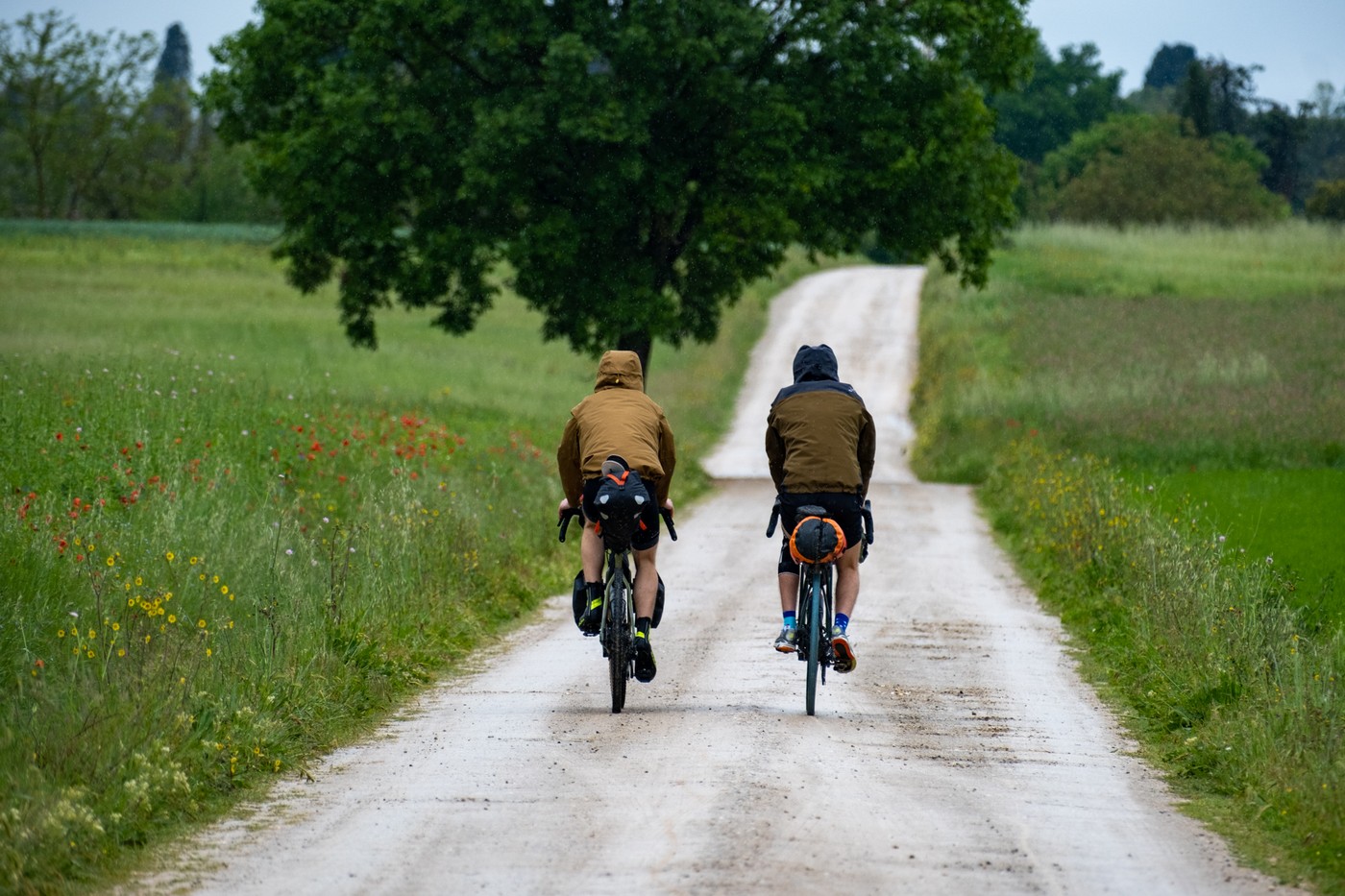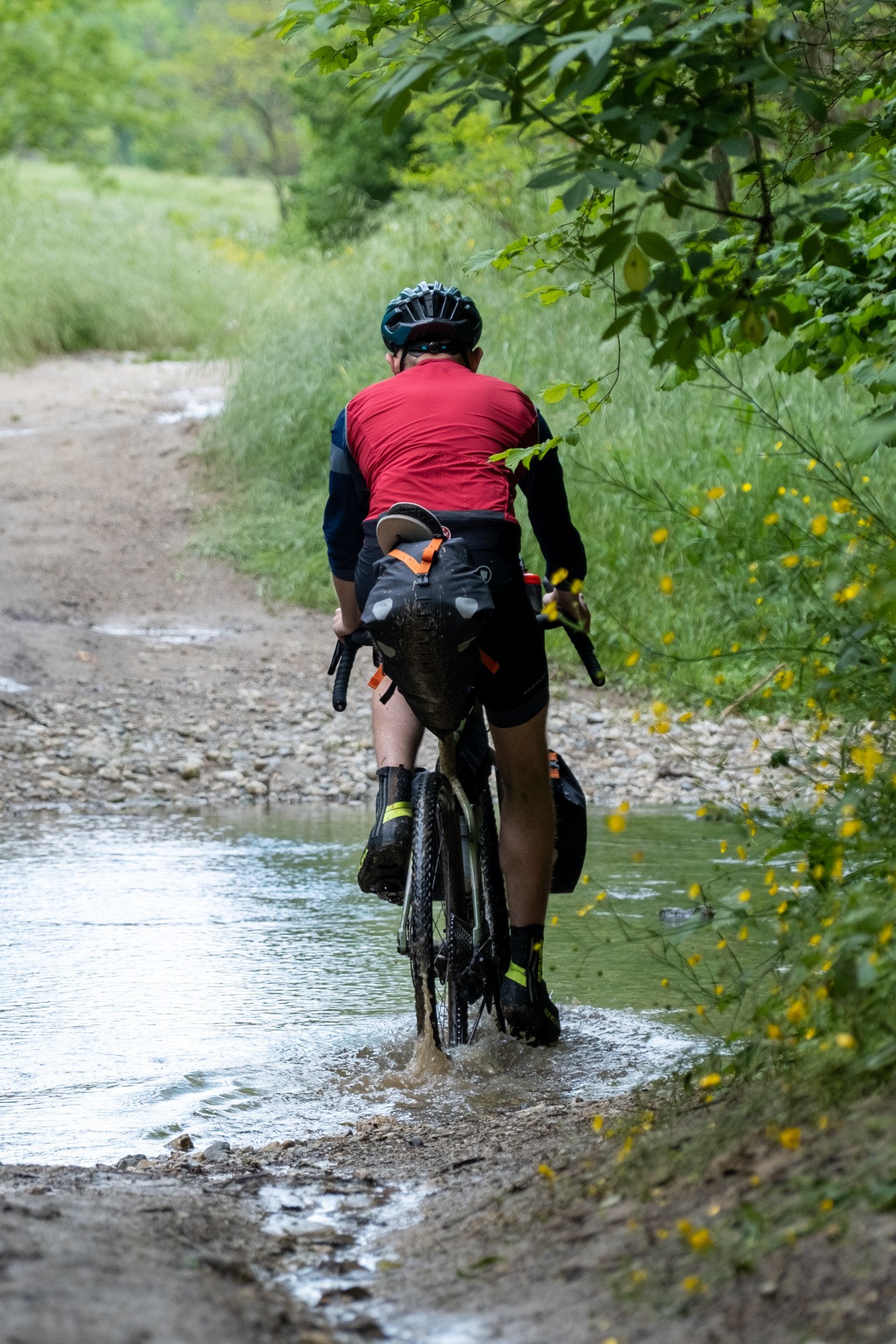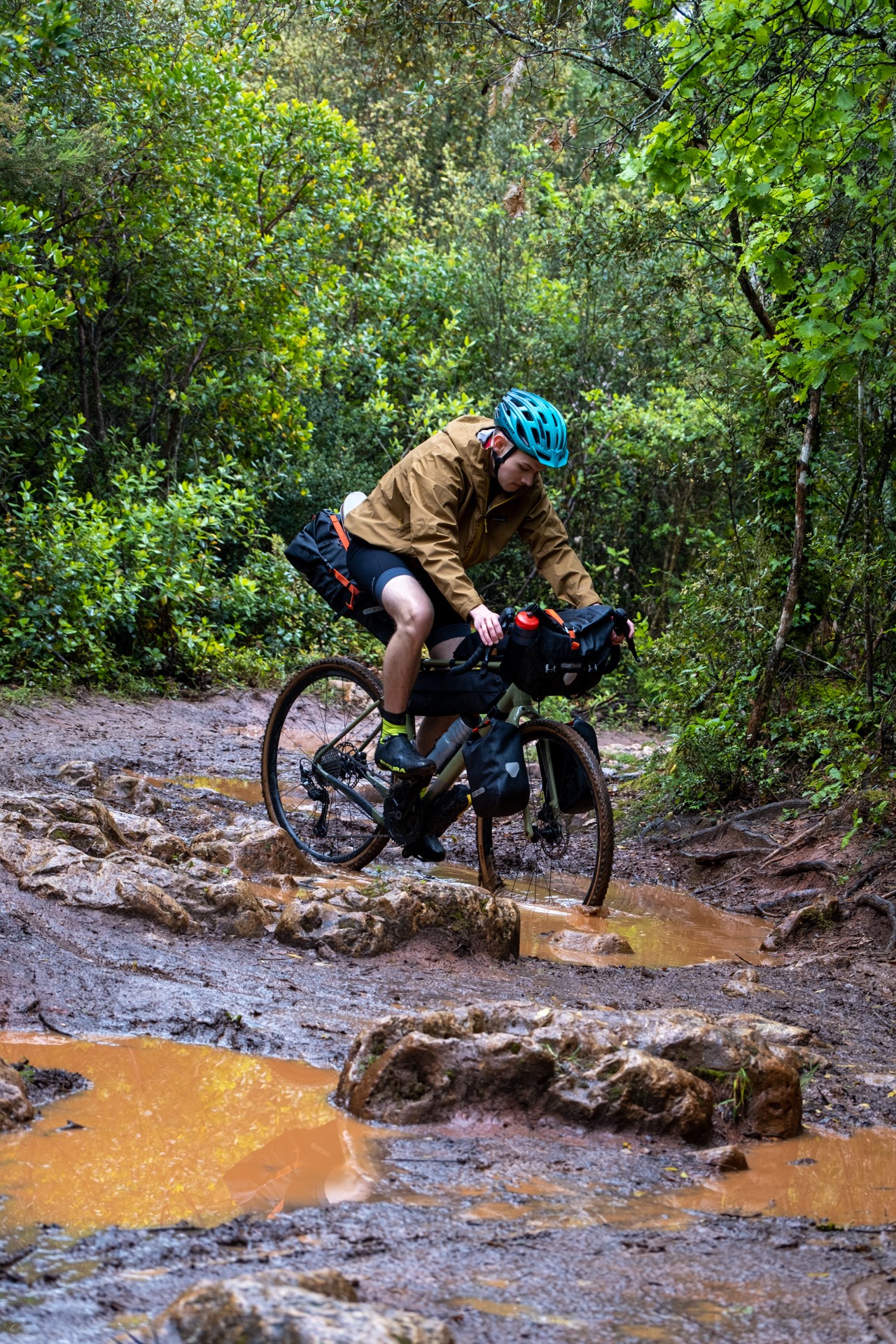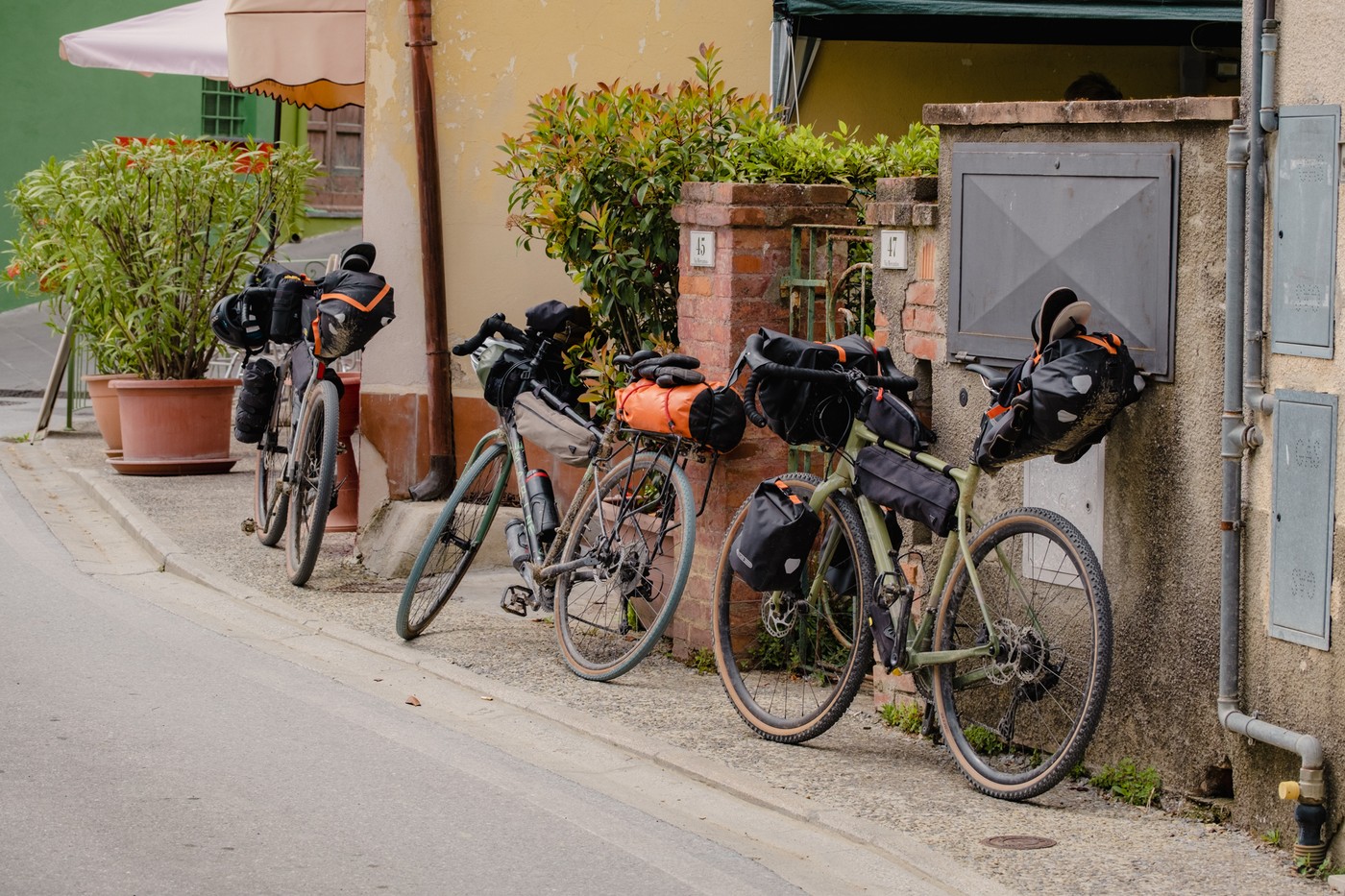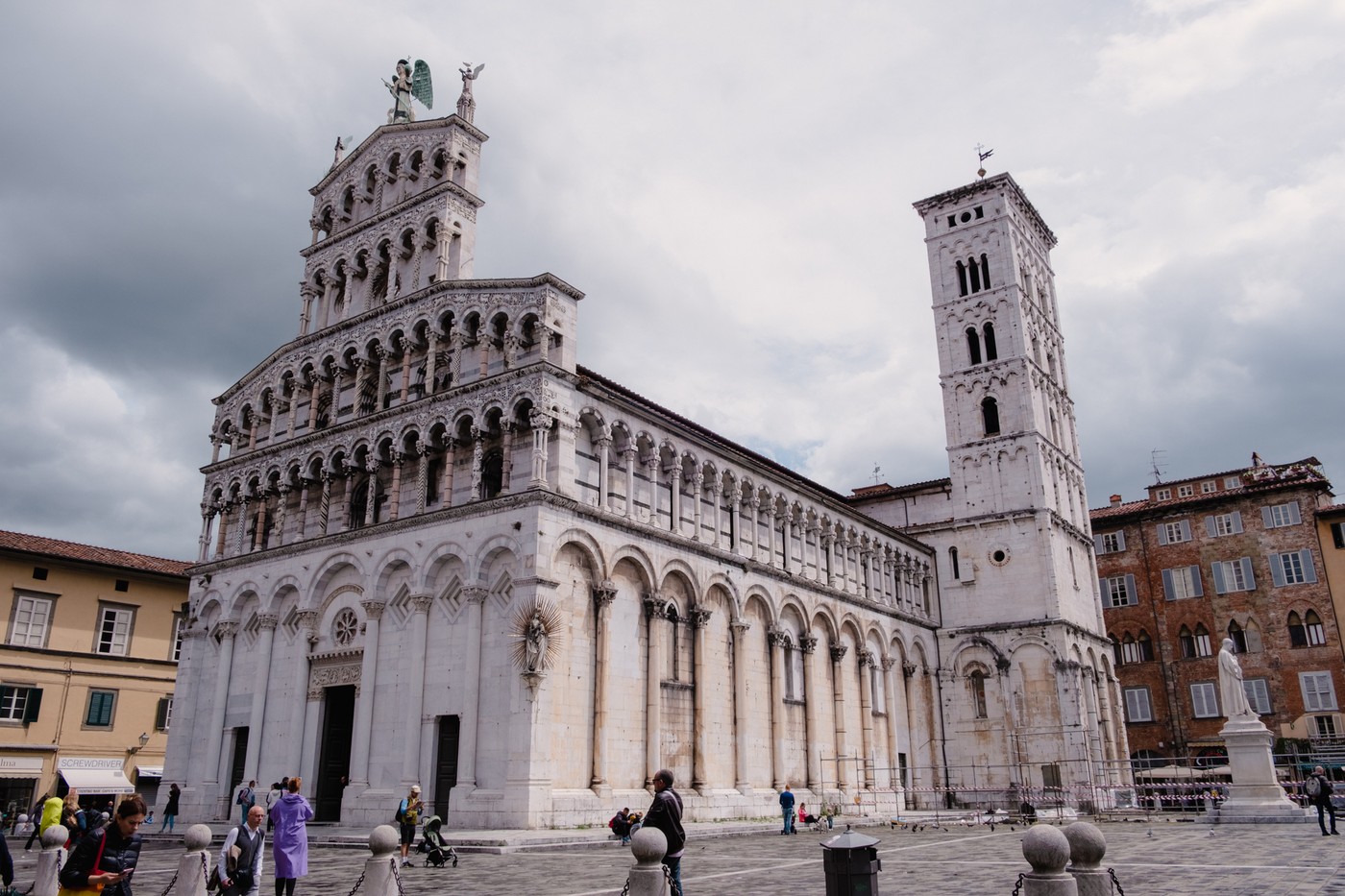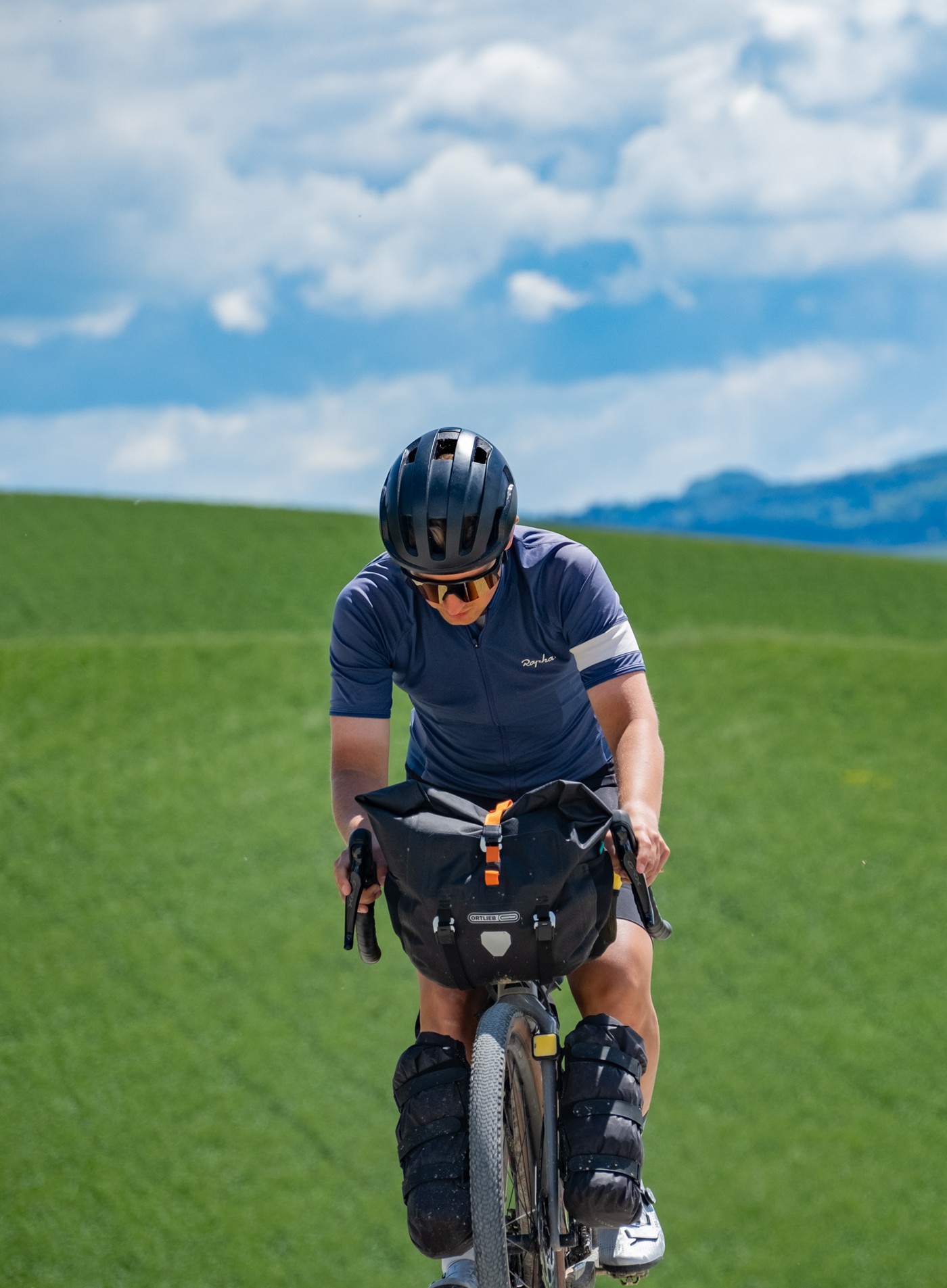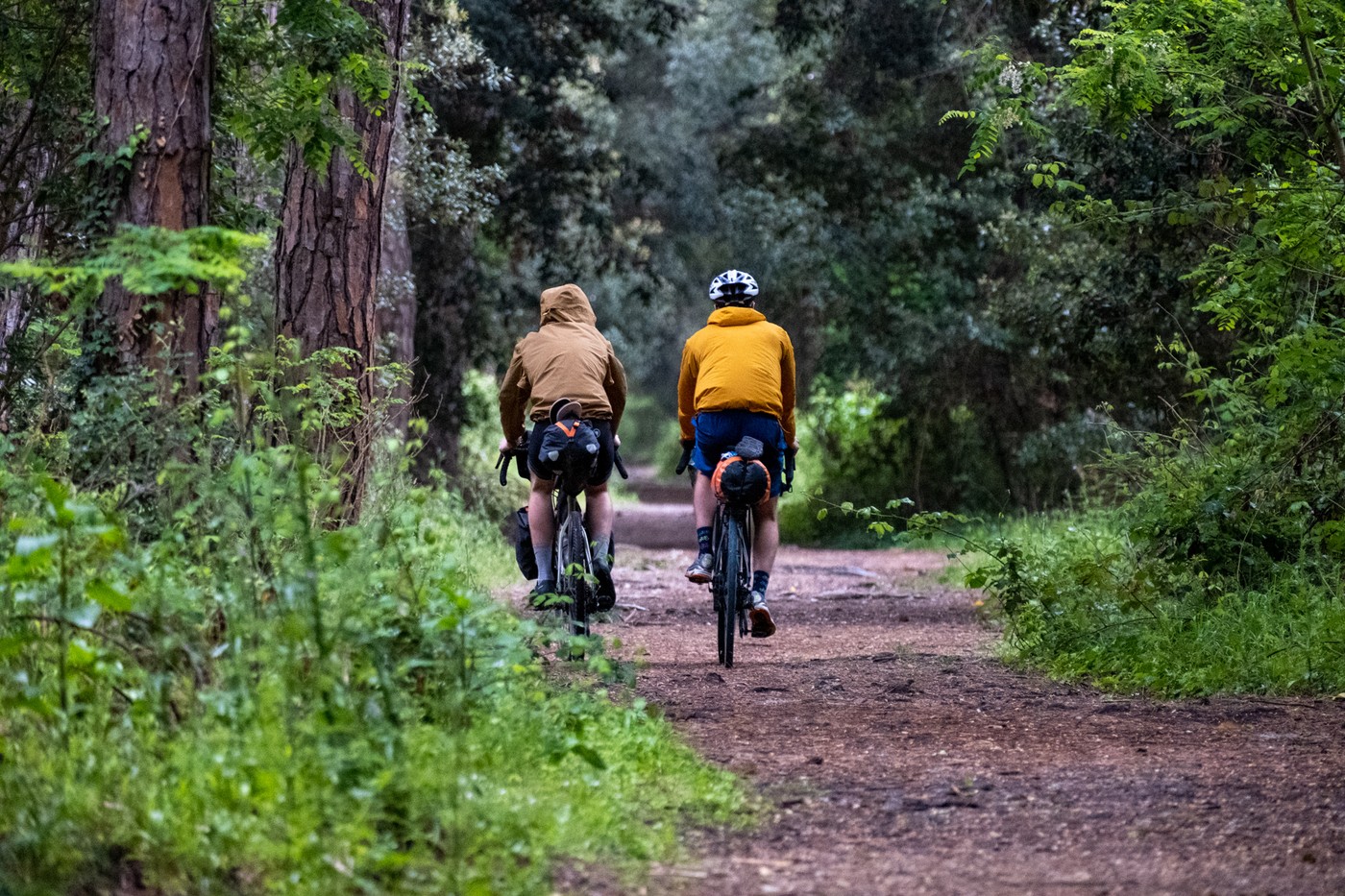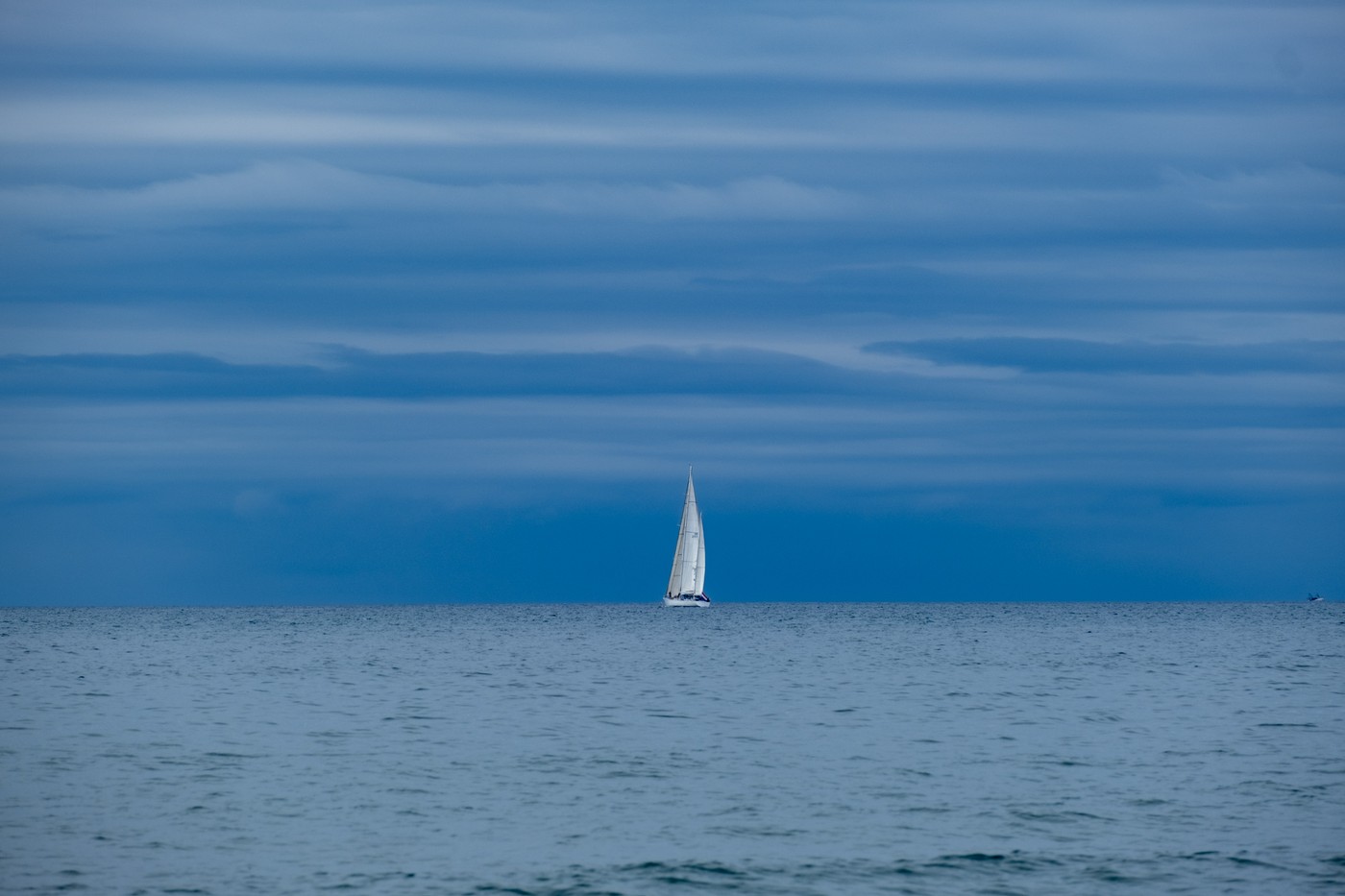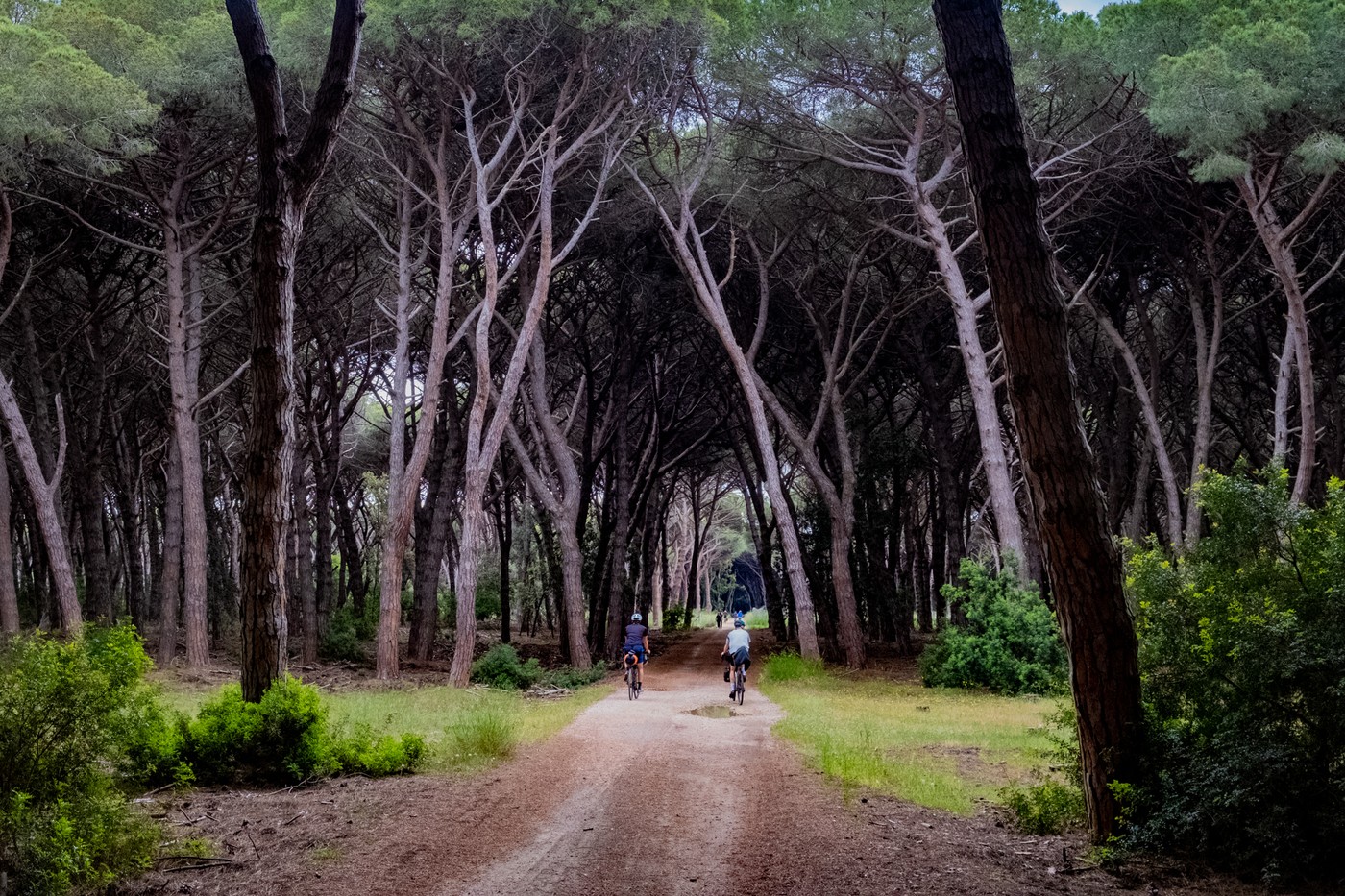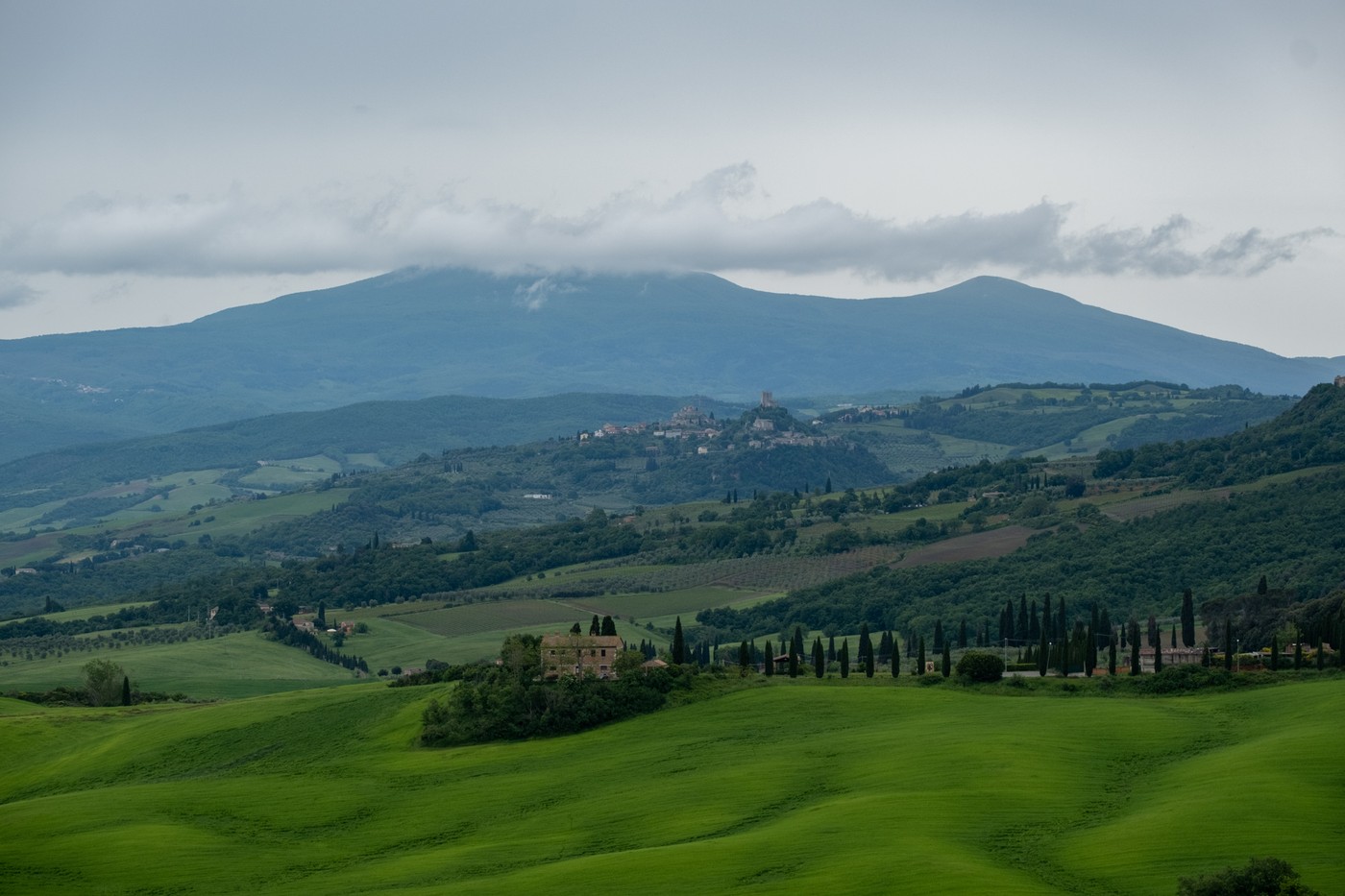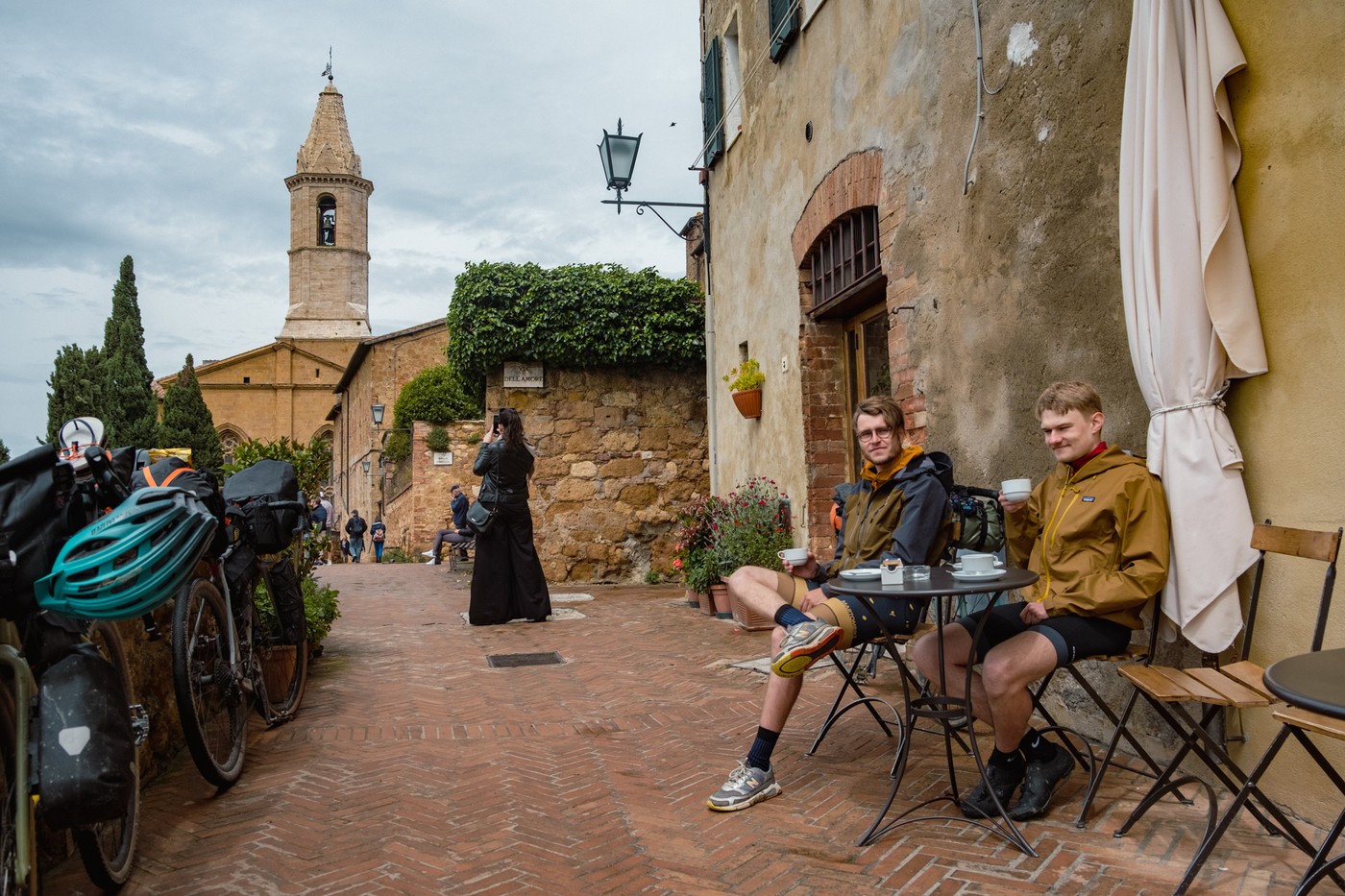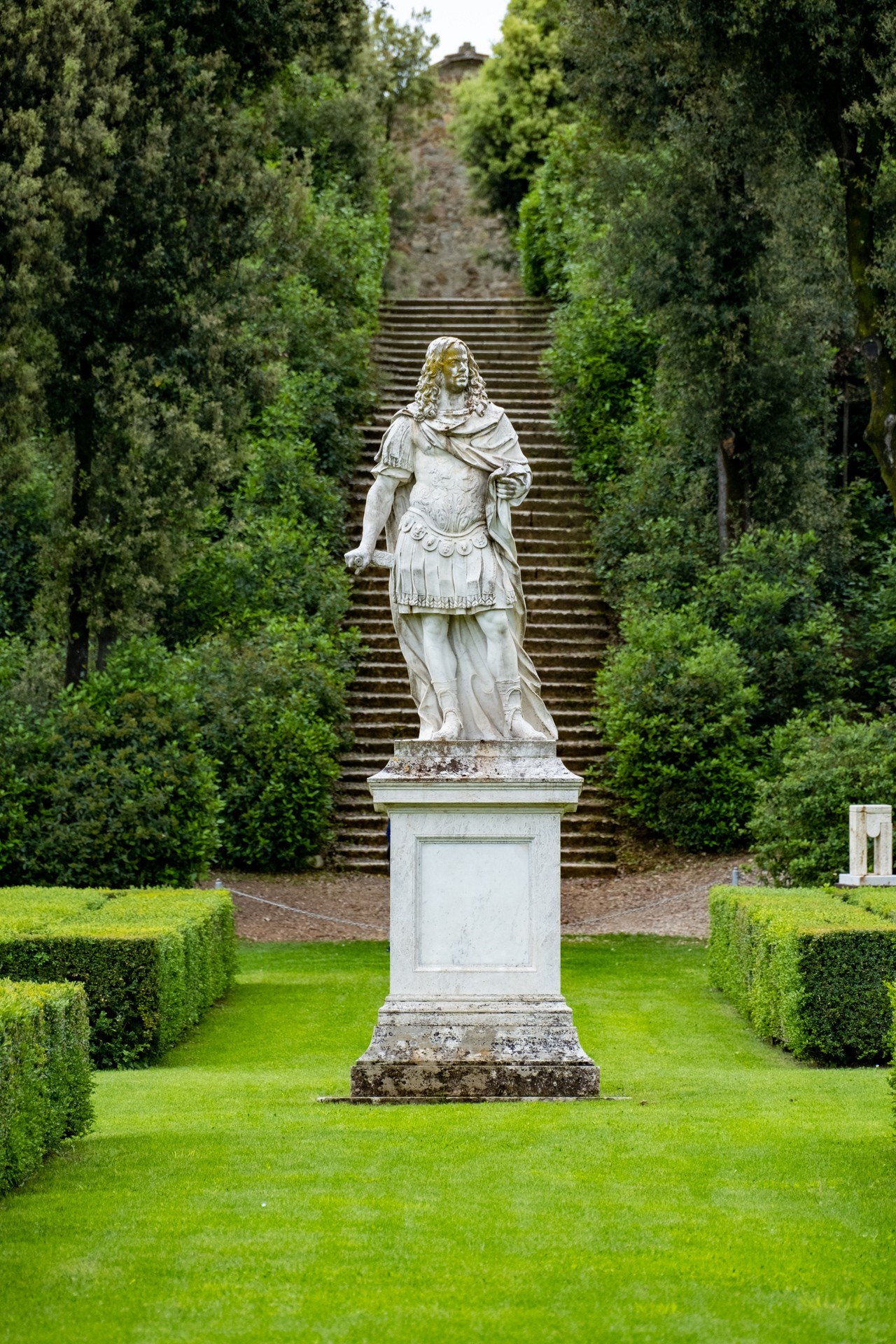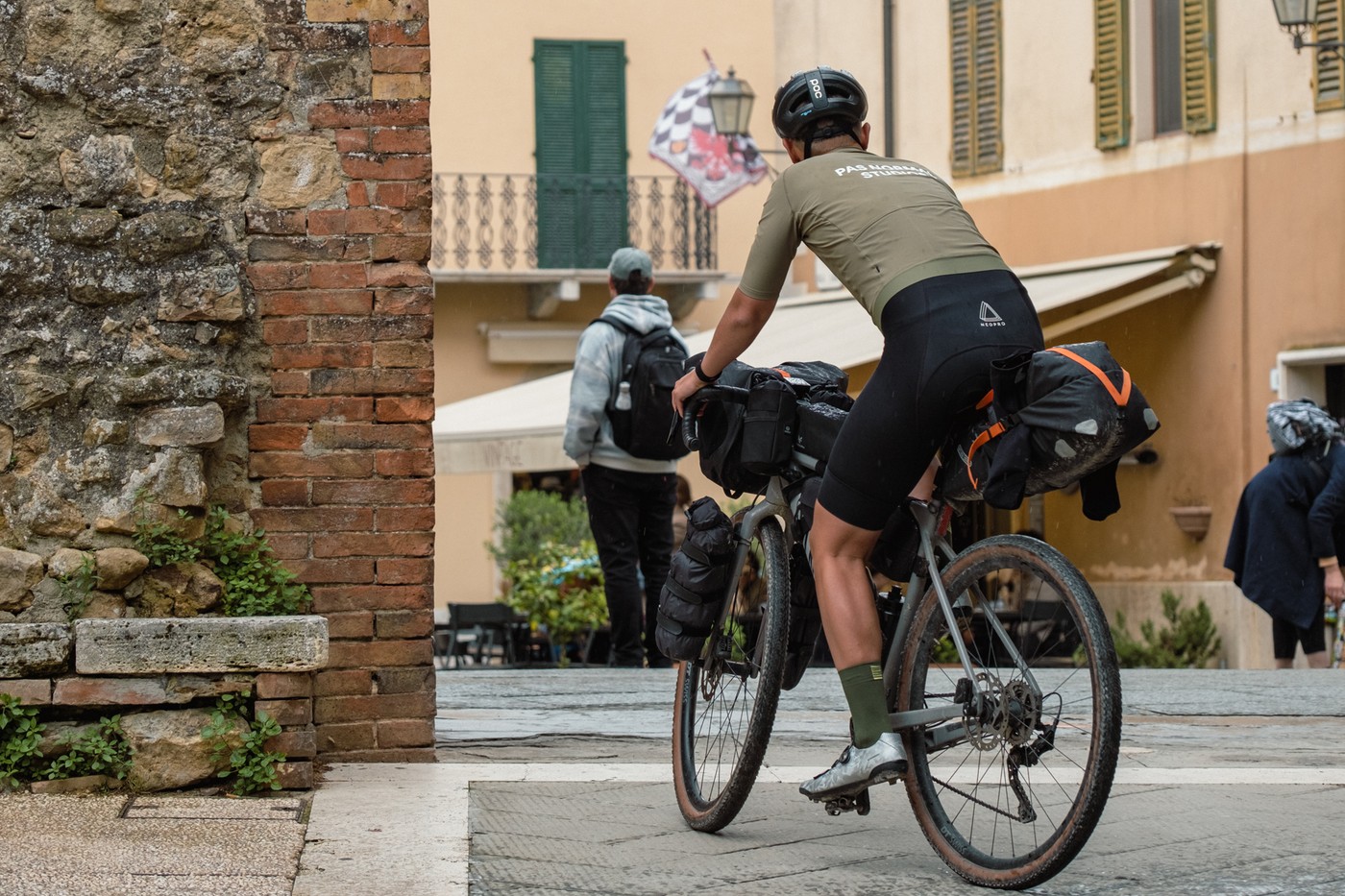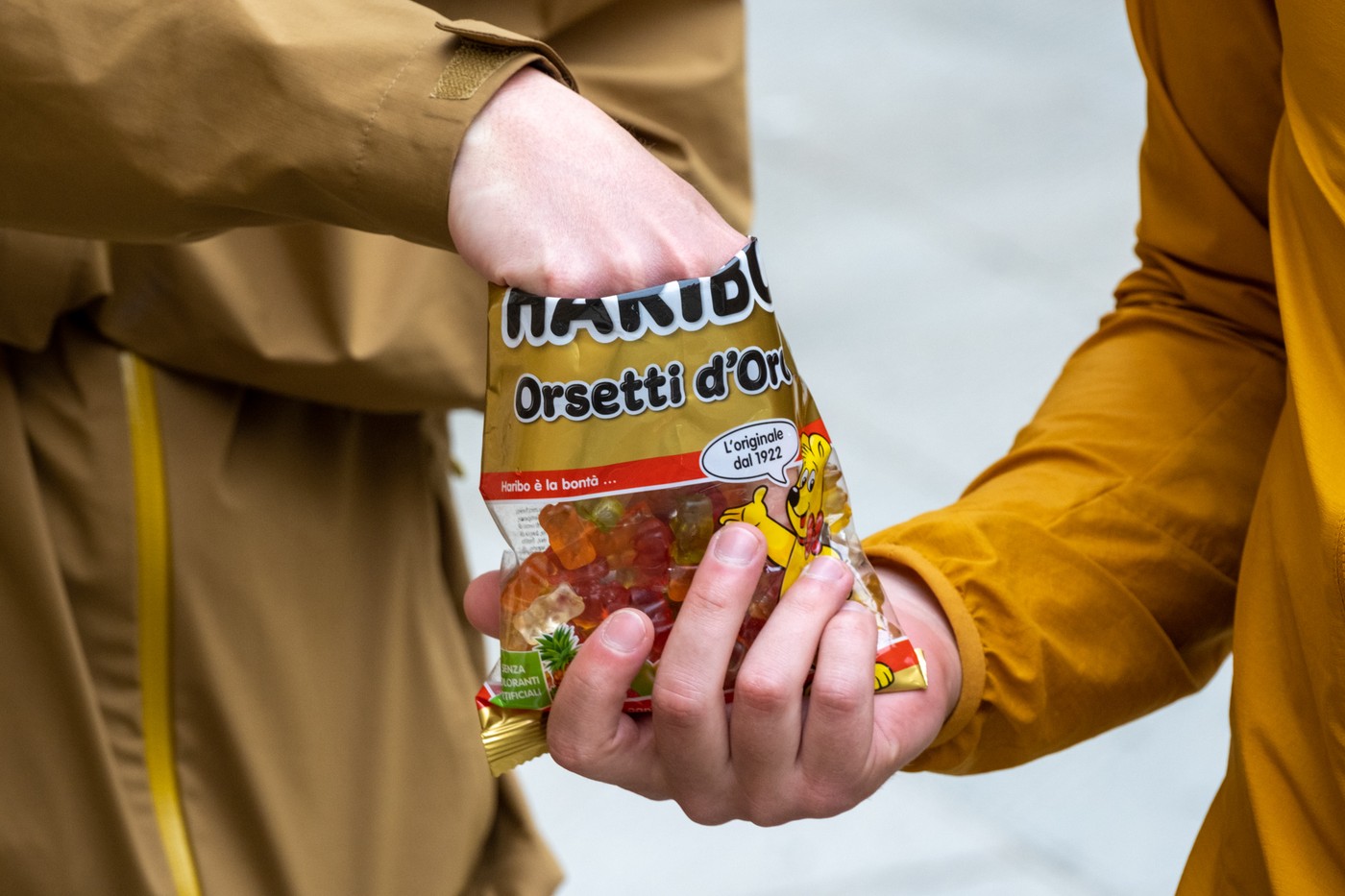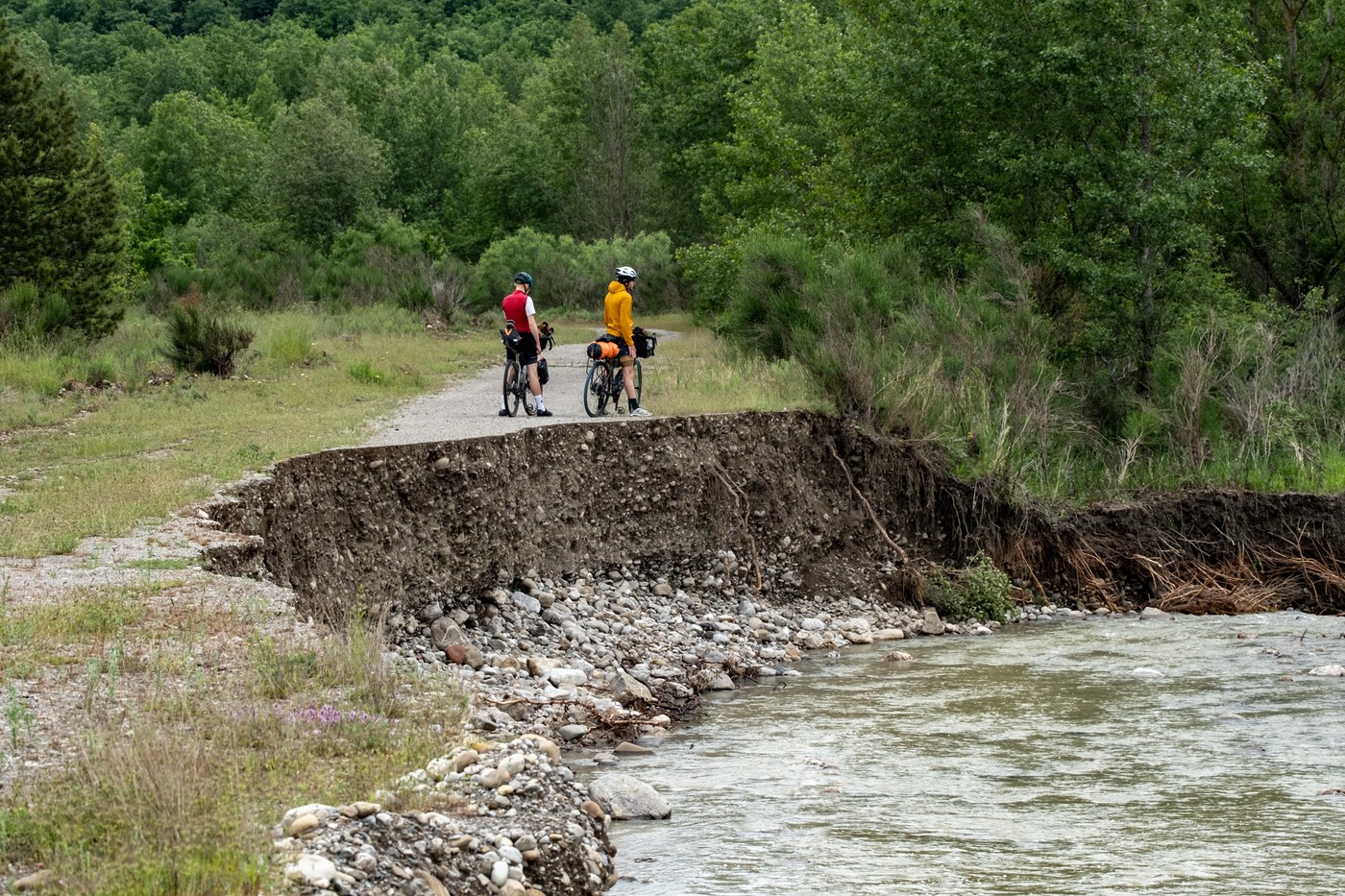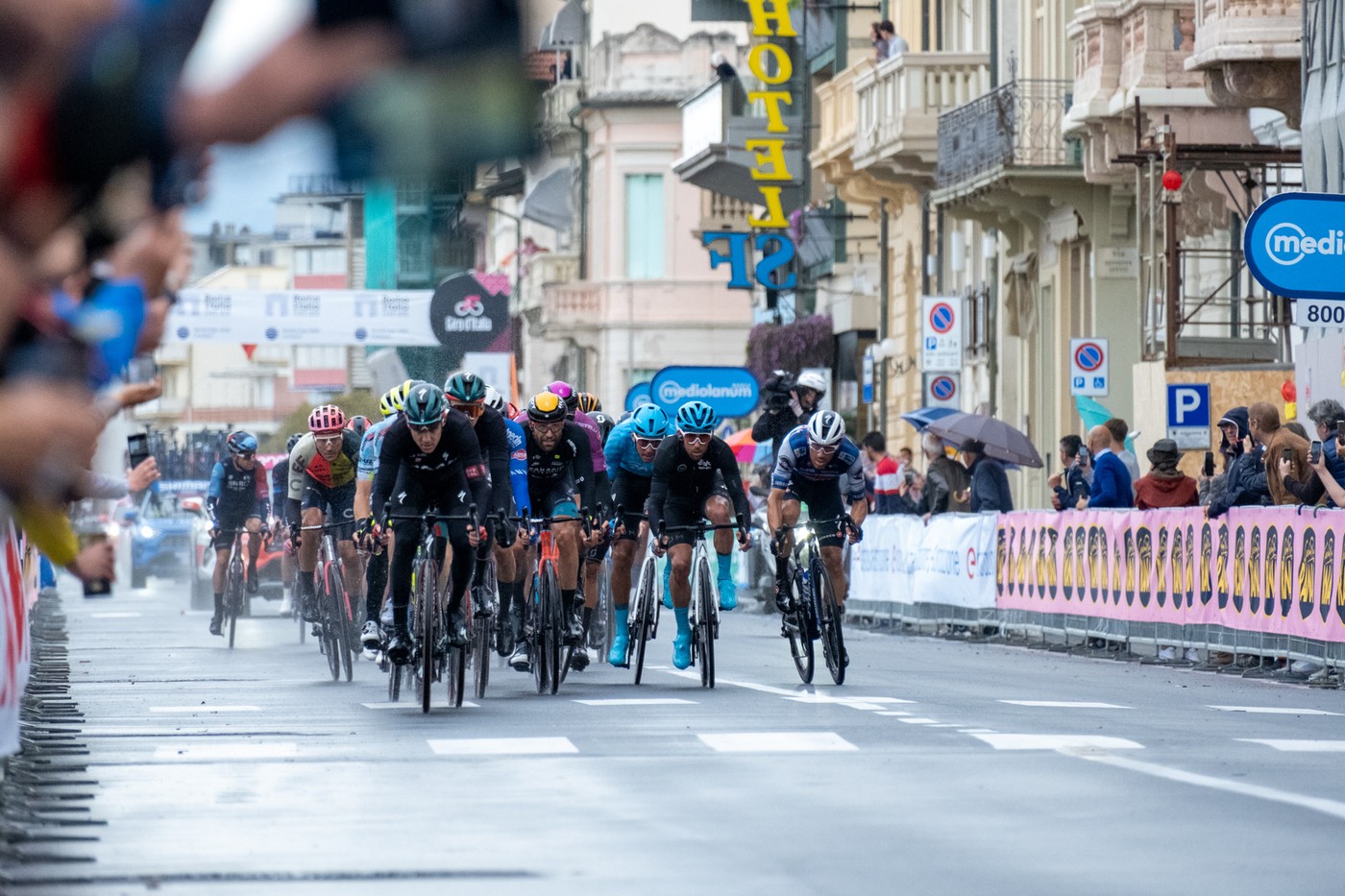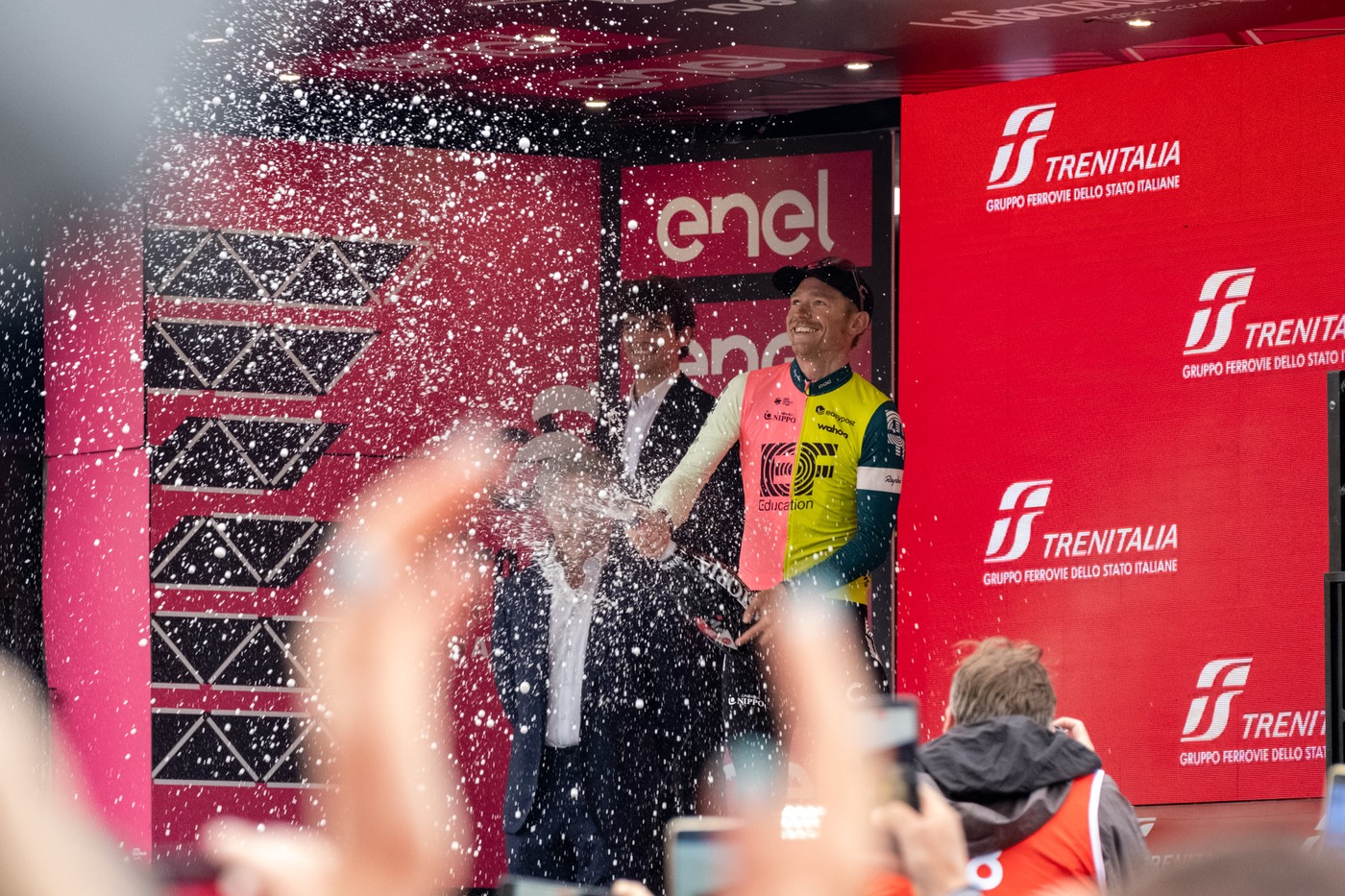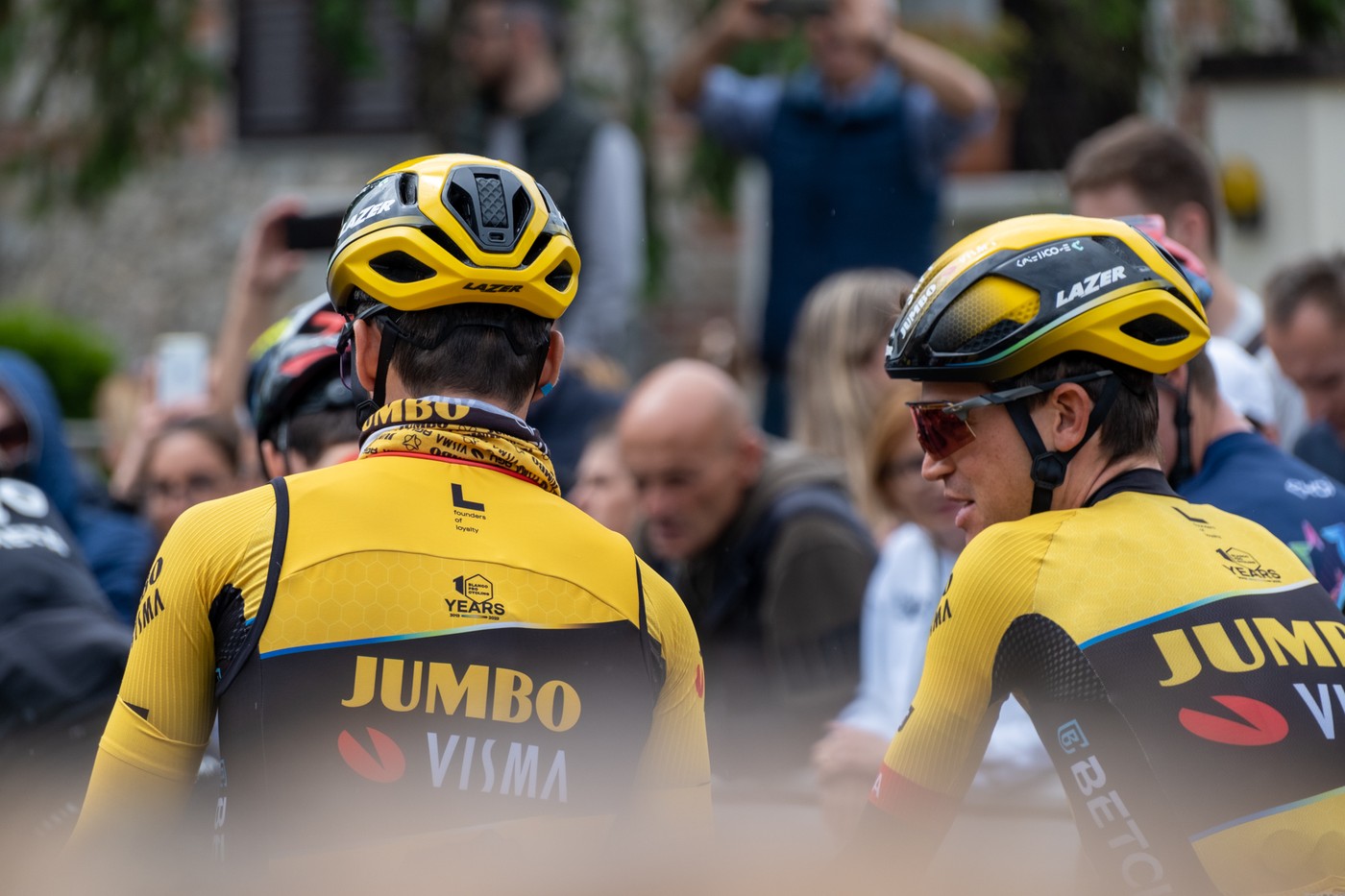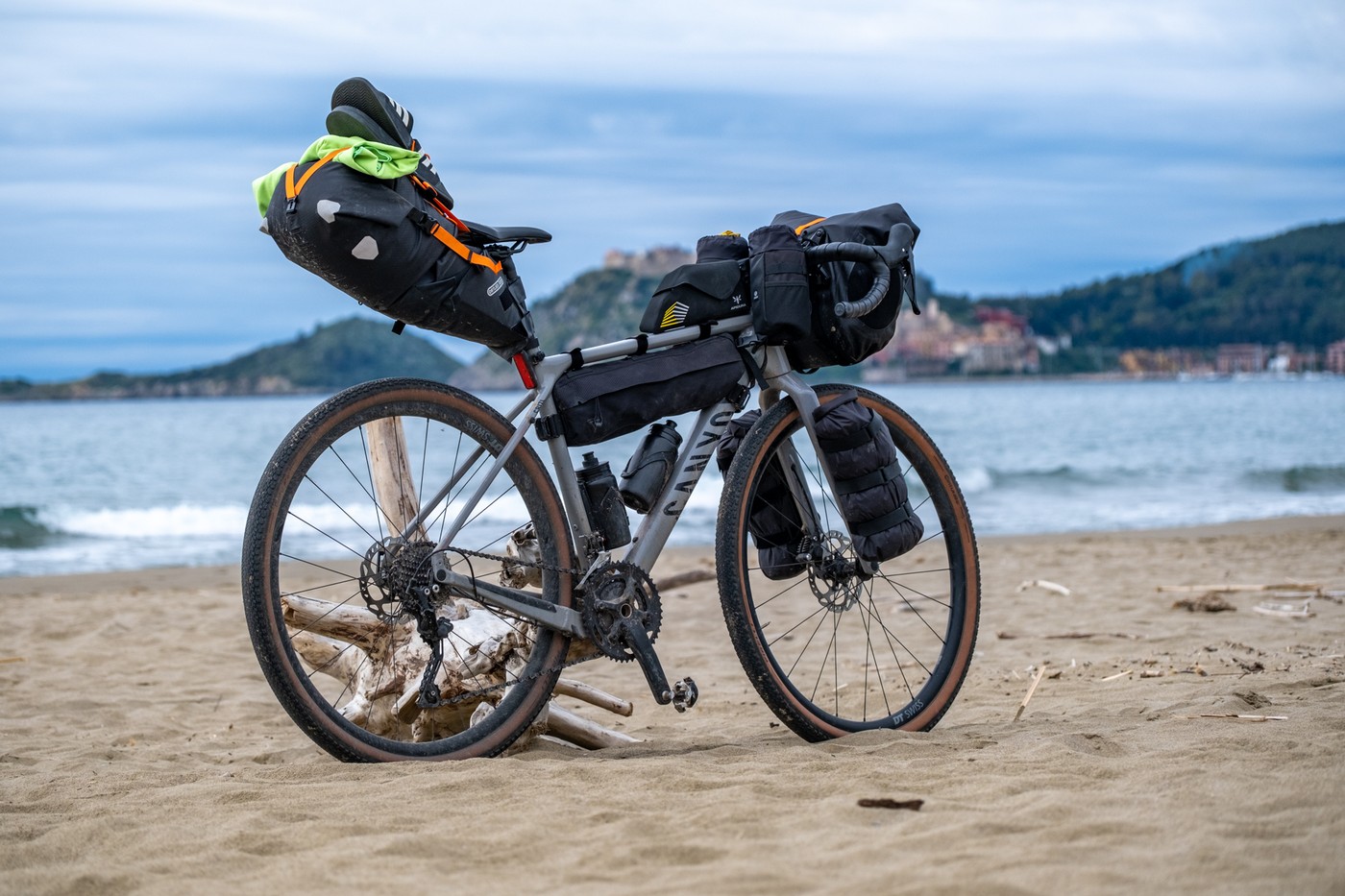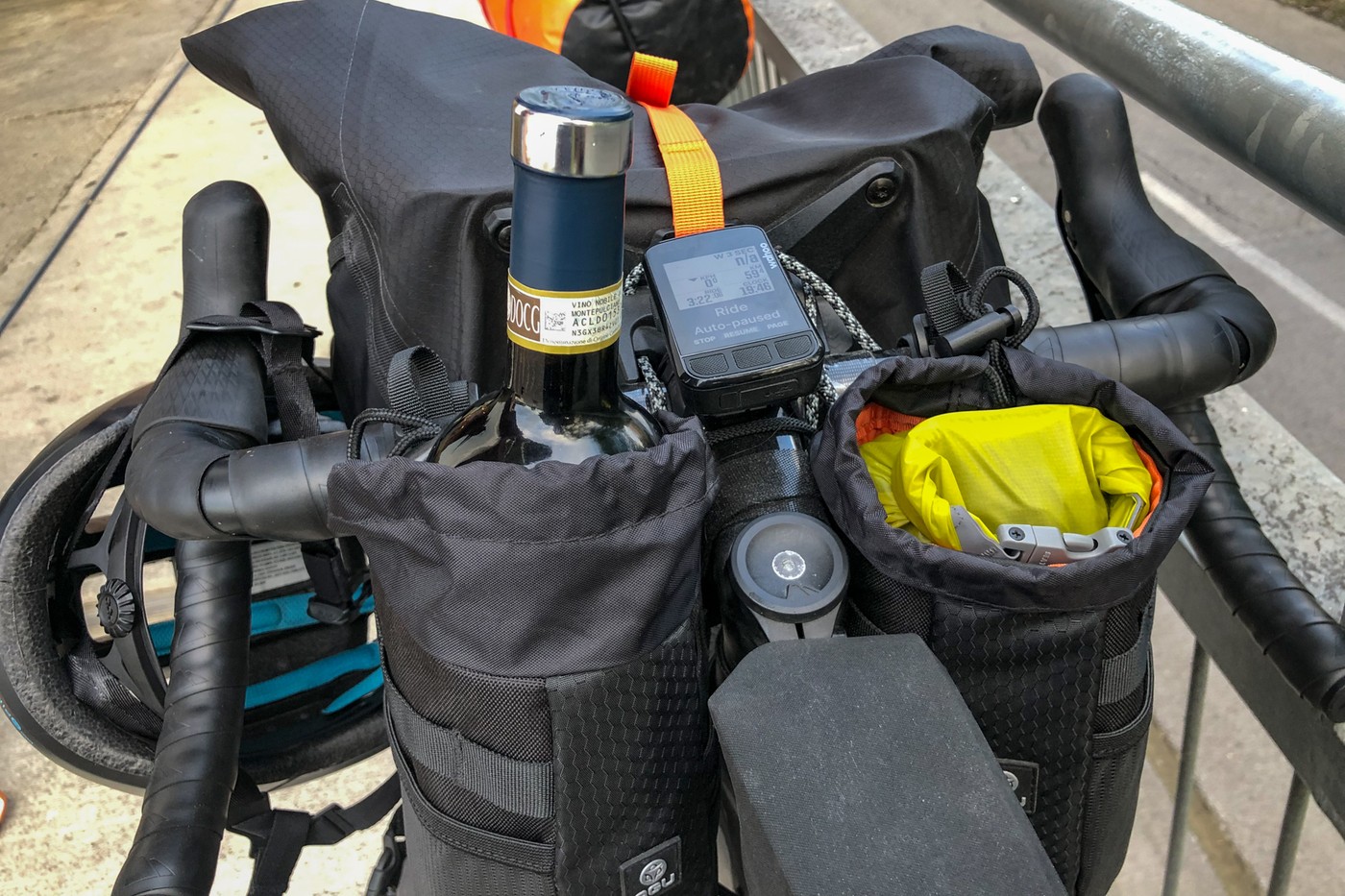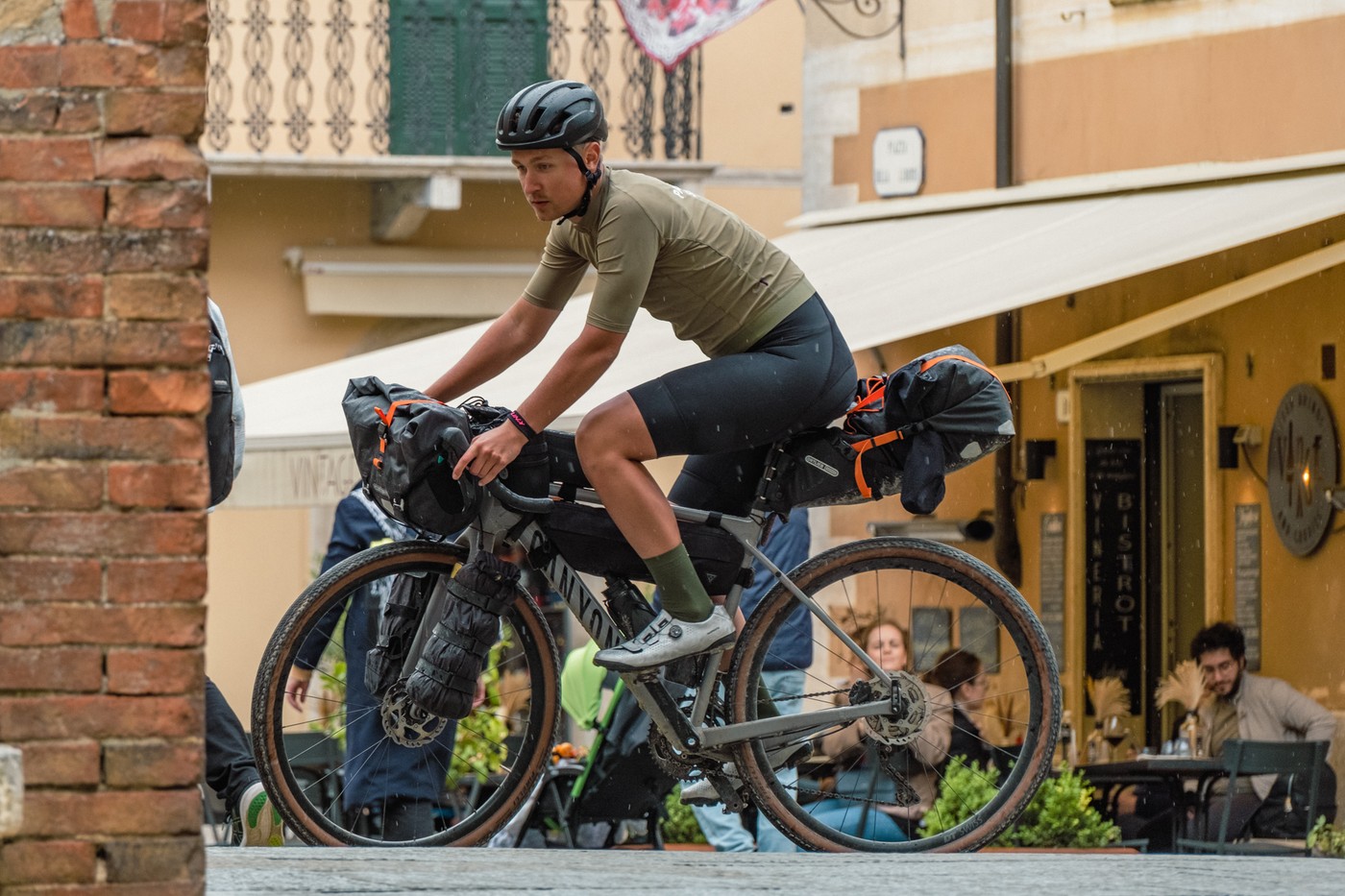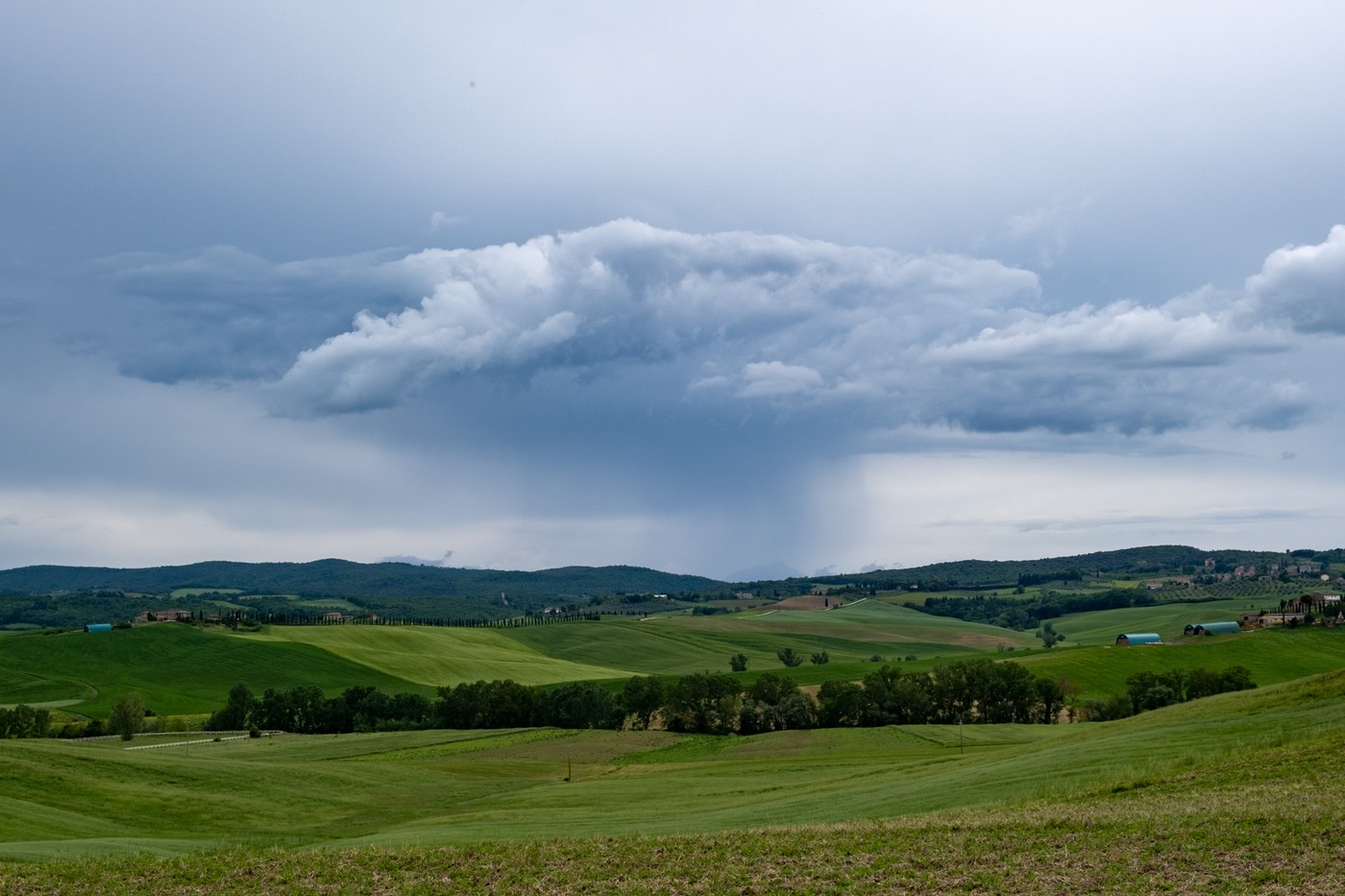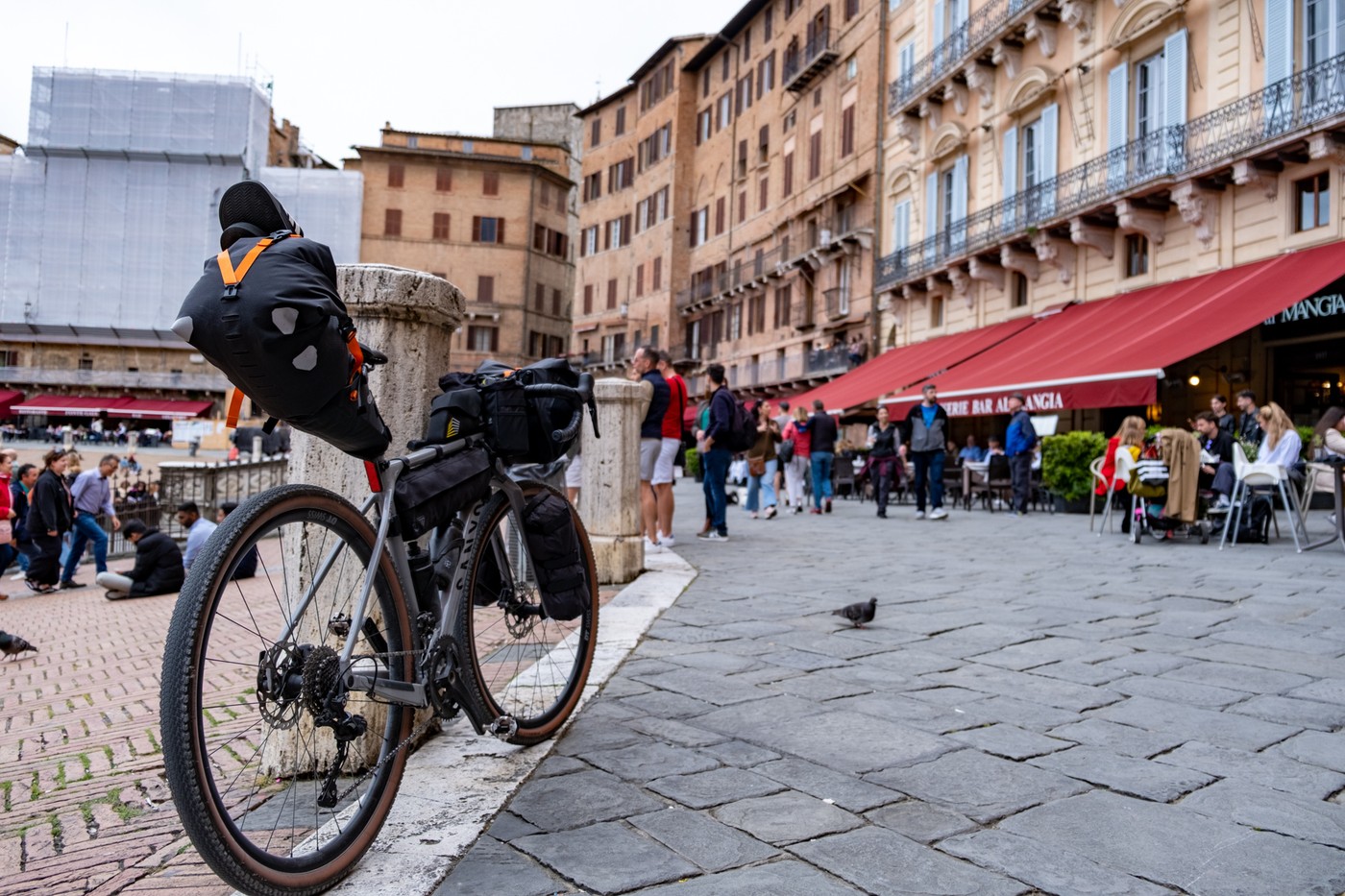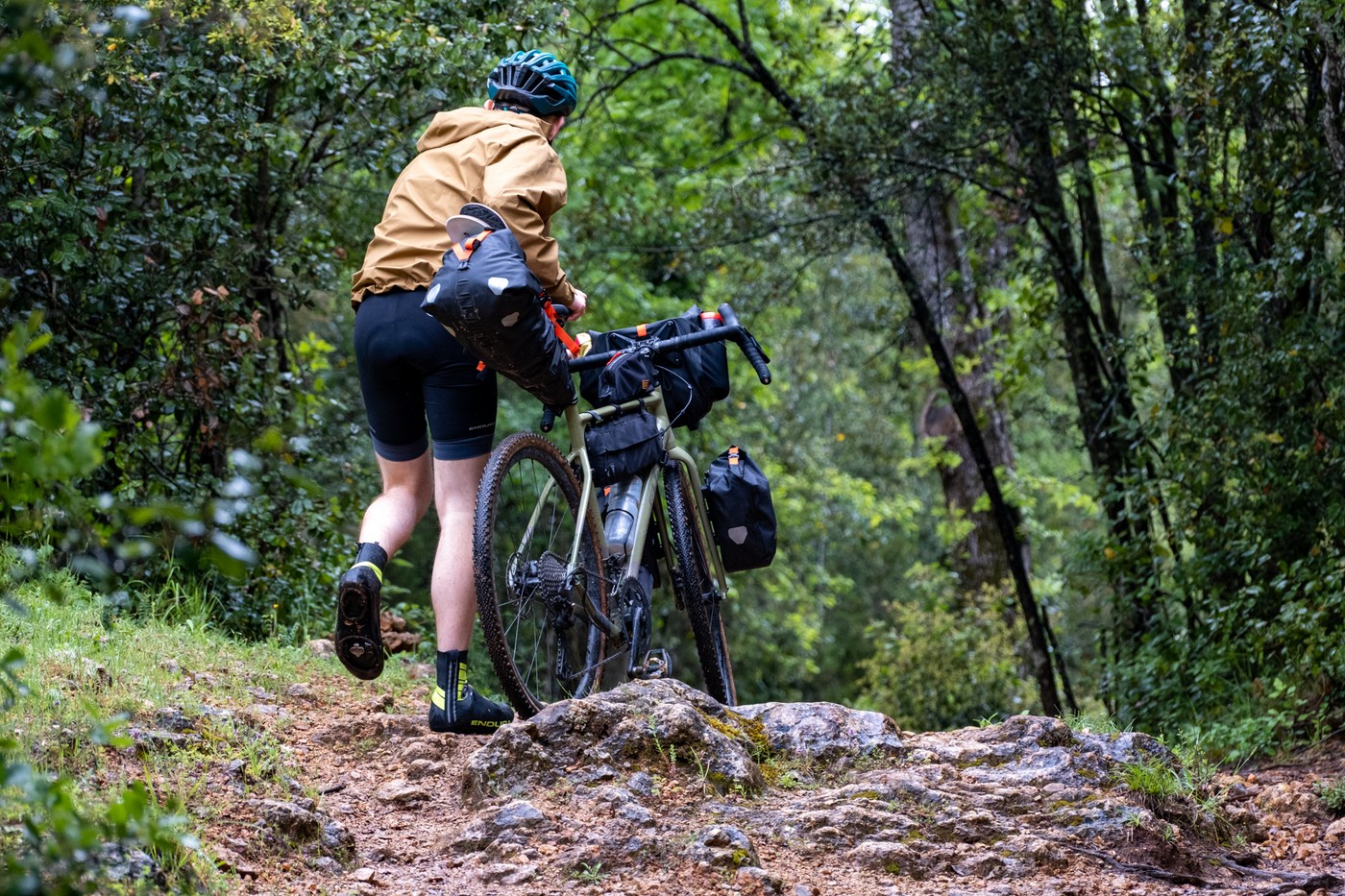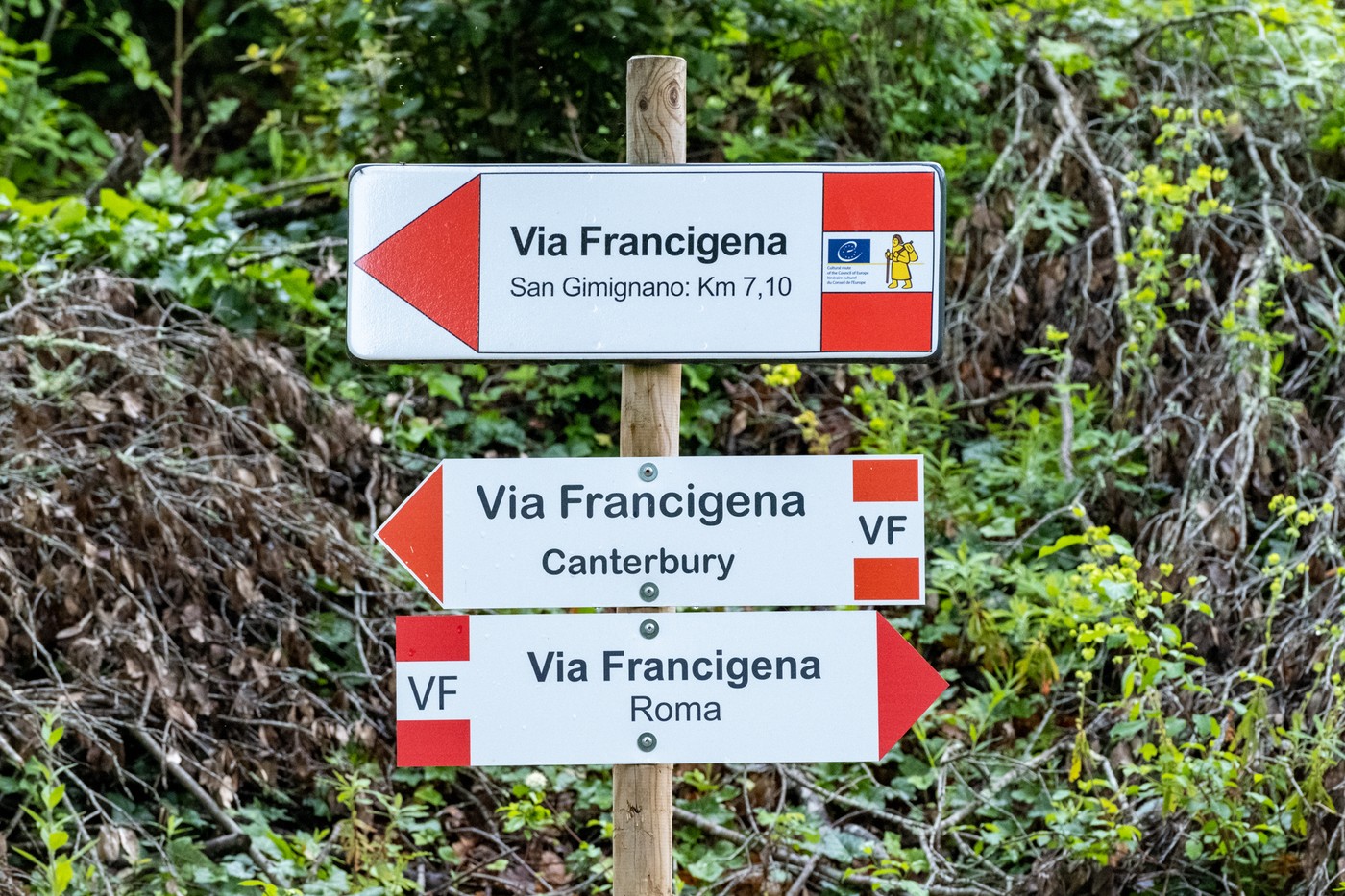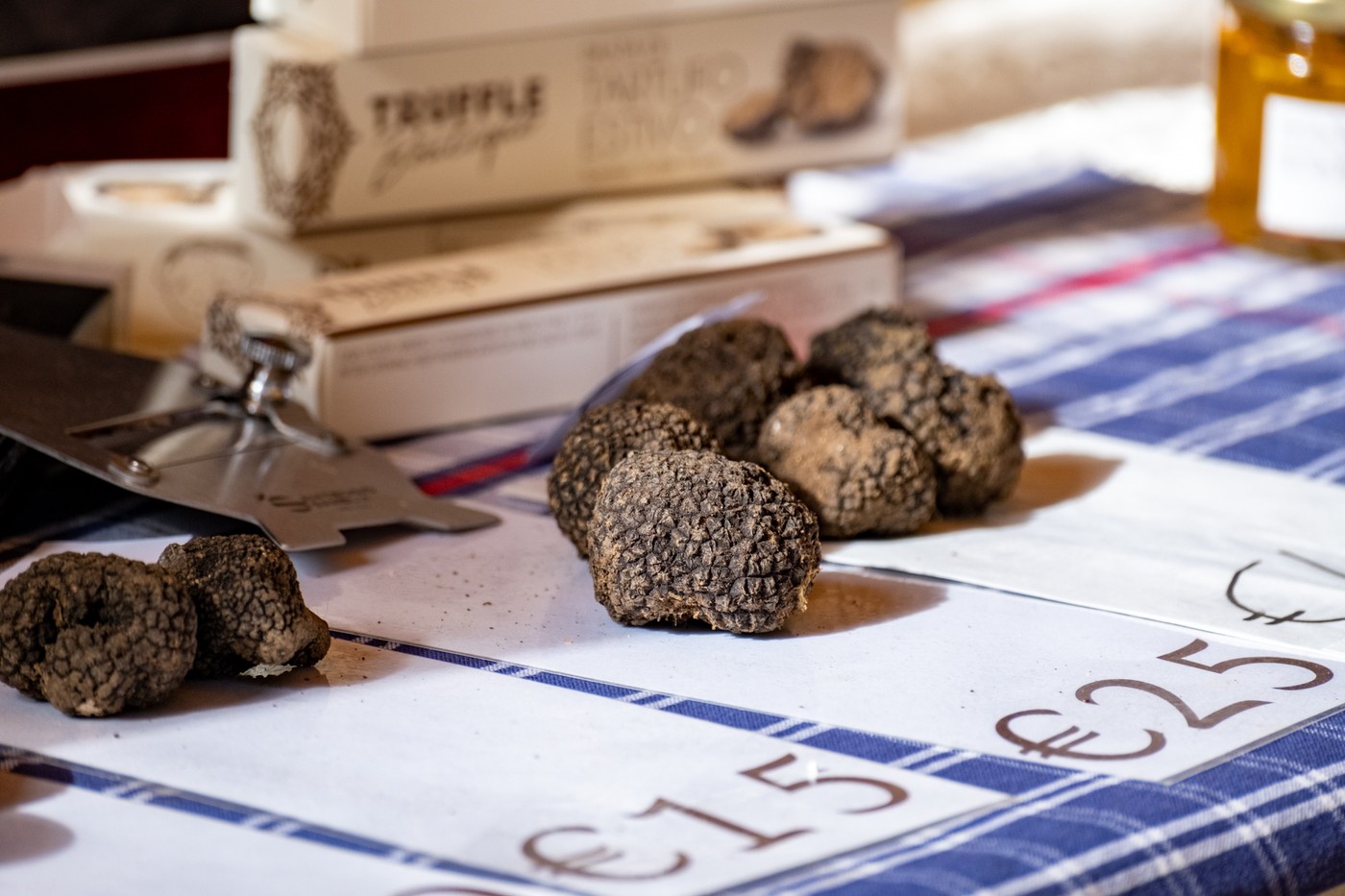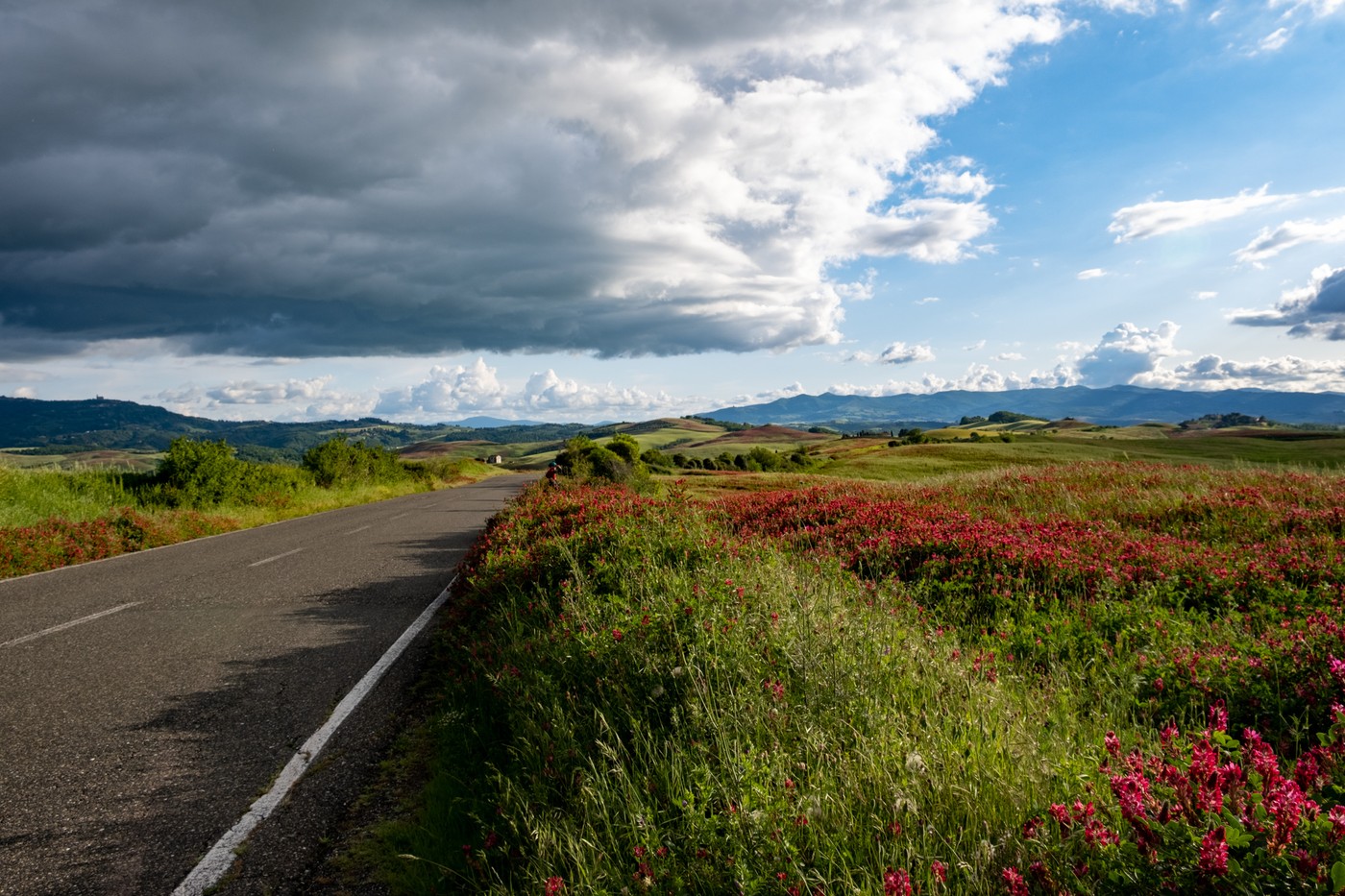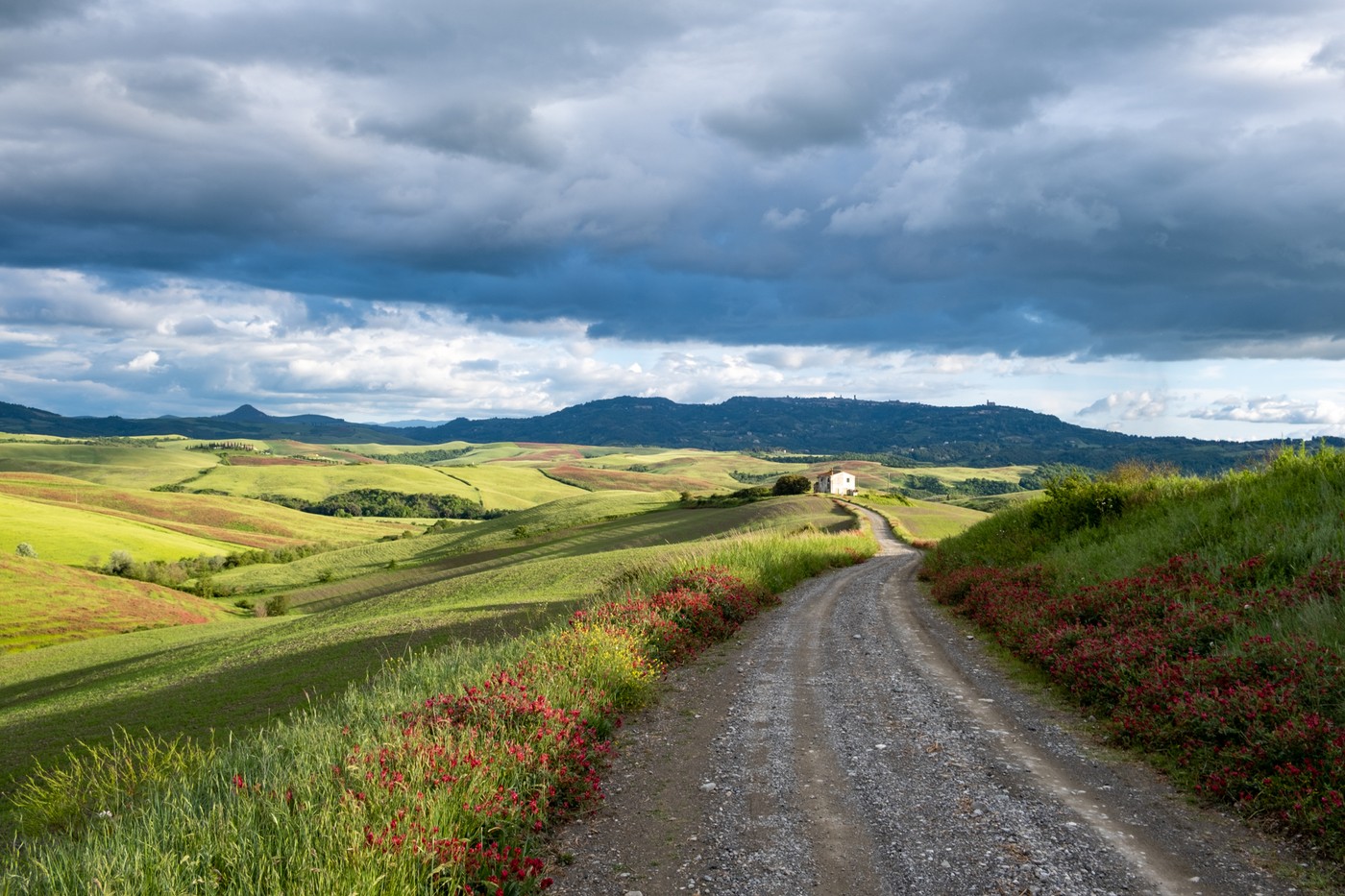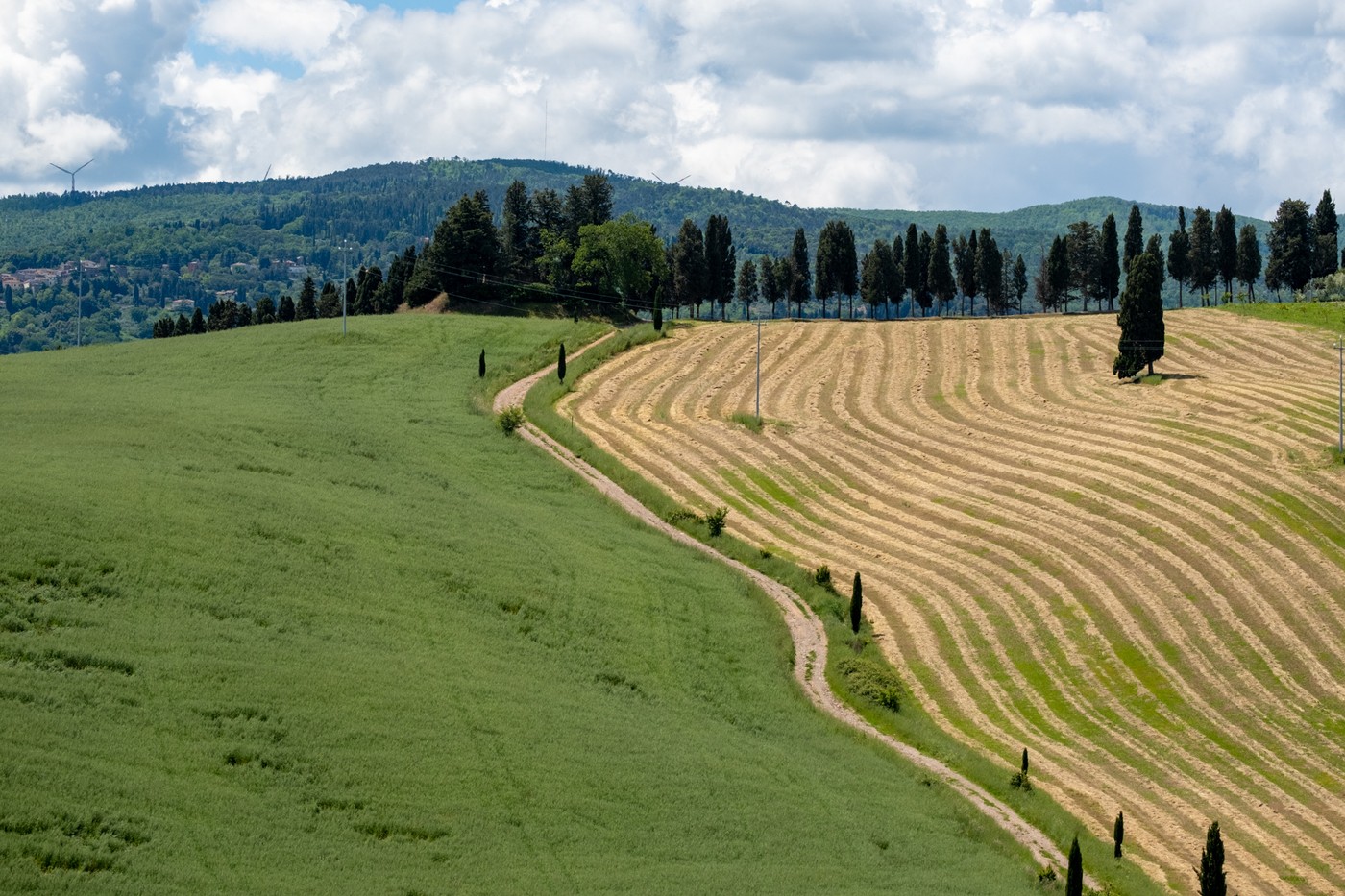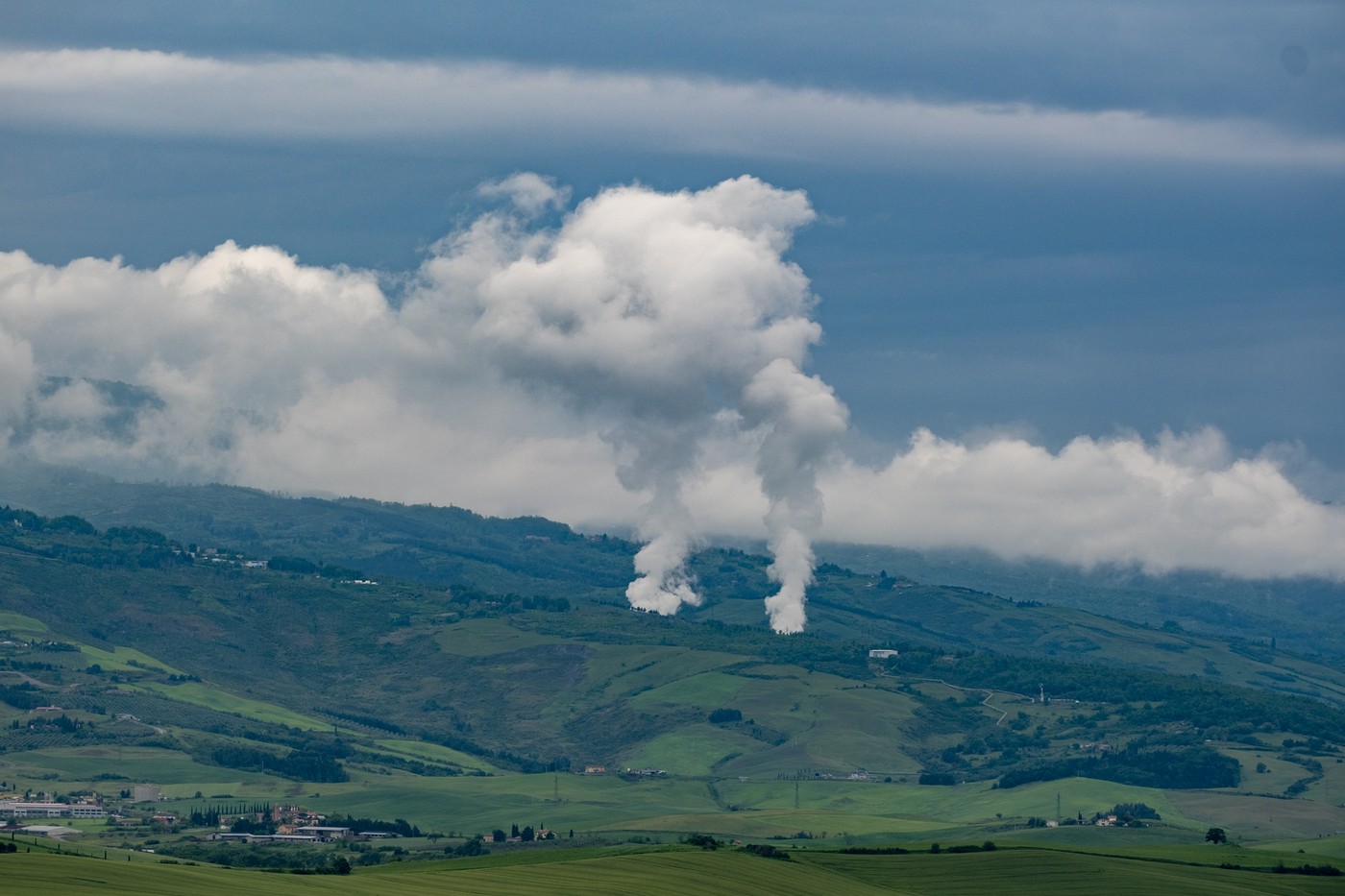Tuscany Trail: Bikepacking in Italy
Blog
June 9, 2023 • ☕️☕️ 10 min read • 47
Welcome to Tuscany, a captivating region filled with vineyards, olive groves, and timeless towns. In May 2023, we embarked on an incredible bikepacking journey on gravel bikes. Following the routes of L’Eroica and Via Francigena, we passed through small towns, over hills, and along roads lined with cypress trees, uncovering the true essence of Tuscany.
Our adventure led us to the Giro d’Italia, a big three-week bike race. We got to see two parts of it - a fast finish in Viareggio and the start of a stage in Camaiore the next day.
Route

Tuscany Trail Bikepacking
- Distance: 490km
- Elevation: 7300m
- Time: 8 days
- Date: May 2023
We followed a segment of the Tuscany Trail official route, captured in a comprehensive Komoot collection that we used for planning.
Because of the Giro d’Italia schedule, we had to adapt our plan to reach Viareggio (marked with point A on the Komoot map) before Tuesday afternoon. Therefore, we parked the car at Camping Campeggio Il Treccolo near Siena and began the journey from there, heading north-west to Viareggio. Our timing was spot-on, as 4 days later we arrived at the Stage 10 finish line two hours before the Giro riders. The next day, after cheering on cyclists at the group start in Camaiore, we cycled to Pisa and caught a train to Orbetello (point B on the map) to follow the bikepacking route back to where we started.
We did the route in mid May hoping for sunny weather and milder temperatures relative to the scorching summer months. We were unlucky with our timing. That week heavy rains hit Italy, causing floods in the Emiglia Romana region, just north of Tuscany. Effects on our route were not as severe. It “just” rained for most of our trip. Temperature-wise I was quite happy about my decision to take a down sleeping bag, which I also used on trips to Iceland and Norway, as it was pretty chilly at night. During the day the temperature was ideal for cycling, oscillating around 20 degrees Celsius.
Strade Bianche to Siena
Tuscany’s white gravel roads are famed as the venue for the Strade Bianche race, widely acclaimed as one of the most captivating and picturesque one-day classics. Our adventure began by following the race route, with the stunning sight of Siena emerging on the horizon. Despite majestic dark clouds accompanying us all the time, it did not rain until nightfall when we reached our campsite.
Via Francigena: The Ancient Route from Canterbury to Rome
The Via Francigena is an ancient road and pilgrimage route running from the cathedral city of Canterbury in England, through France and Switzerland, to Rome. It’s possible to cover the whole route on a bike. See Eurovelo 5 for more details. The majority of the Via Francigena in Tuscany follows gravel roads but there are some single-track sections through the woods. These gravel roads have very low traffic volumes. Along the way we passed wineries, farmhouses, old churches and rode through the stunning towns of San Gimignano, Monteriggioni and Siena.
Because of heavy rainfall, much of the single-track section of Via Francigena was especially challenging to ride - as the rocks became slippery and the trail got very muddy. On one occasion we were forced to cross a stream. Thanks to our lightweight bikepacking setup and thick 45mm tyres the route was rideable. However, other bikepackers with heavy panniers were compelled to seek alternative routes along smooth tarmac roads.
Viareggio, Camaiore and Pisa
Viareggion and Camaiore were our top priorities, as we really wanted to immerse ourselves in the Giro d’Italia atmosphere. We also wanted to see riders on their cool road bikes. Our Giro experience is captured in the next section of the post.
The landscape changed in the north of Tuscany. As the route got closer to the coast, the endless gravel roads and rolling hills gave way to flatter sections with breathtaking mountain views rising from the horizon. After seeing a sprint finish in Viareggio and a group start in Camaiore the following day, we cycled to Pisa to catch a train to Orbetello. Then, we resumed our journey from Tuscany’s south.
Orbetello, Pitigliano, Sorano
The southern region of Tuscany was a captivating accent on our journey. It involved cycling on the coastline trails and beaches near Orbetello, riding through the medieval towns of Pitigliano and Soreno and climbing to the highest point of our journey - a fortress in Radicofani located 850m above sea level. Each rolling hill we conquered along the route brought us closer to the most scenic part of Tuscany - Val d’Orcia.
Val d’Orcia: Montepulciano and Pienza
Val d’Orcia is located south of Siena and in the north-east of the volcanic mountain Monte Amiata. Its name derives from the river Orcia, which runs through the valley. Renaissance towns like Pienza, Montepulciano and Montalicino are well-preserved as the area is a UNESCO World Heritage Site. We were spoilt here by countless espressos, delicious cheese, and my all-time favourite wines: Vino Nobile and Brunello. Each town in the region is usually located on a hill. Which means a lot of cycling up if you are keen to explore the old cities or just want an espresso with a view. There are no stores between the cities (we learned it the hard way) so plan accordingly.
We pitched our tent for the night at Podere Il Casale - an organic farm located on a hill just between Pienza and Montepulciano, with a superb restaurant serving their own produce.
We spent the last day of our trip visiting Pienza, Montepulciano and San Quirico d’Orcia. As we got closer to our car, we once again hit the white gravel section of the Strade Bianche. It was the perfect way to say goodbye to Tuscany on a bike.
Giro d’Italia
The Giro d’Italia, a 3 week multi-stage race around Italy, is one of the world’s most famous sporting events. Its history began in 1909 when La Gazzetta dello Sport organized the first race. Since then, there have been 106 editions of it. The race is accompanied by an electric atmosphere, with cheering crowds, colorful flags, and the exhilarating sound of whirring wheels.
Watching a sprint finish in Viareggio was an unforgettable experience. The breakaway kept the peloton distanced, thanks to heavy rain and a hilly section preceding the long straight before the finish line. There were only three riders in the breakaway. They all fought for victory in a sprint. Magnus Cort, a Dutch cyclist with a cool blonde moustache, crossed the finish line first.
The following day we cycled to Camaiore to attend the team presentation and group start. We got some race-branded swag from the advertisers’ caravan. I didn’t follow the team presentation as I took pictures of beautiful race bikes instead. Factor and Canyon were winners for me. Also, to my surprise, pro riders don’t need to overcompensate themselves with excessively loud freehubs…
Camping
We came prepared to spend every night in a tent, hoping for pleasant weather. Unfortuantely, due to heavy rains on a few occasions we had to take other accommodation to dry our stuff and avoid flooding our tent at night. We spent 4 nights camping and 3 nights in apartments. Here are the campsites we visited and liked:
- Chianti Glamping Village - Situated far from Siena, next to vineyards and wineries producing Chianti. The name is misleading as it’s also possible to pitch a tent.
- Camping Le Balze Volterra - Camping in Volterra city. Seems popular among bikepackers since we met a few. The city is 550m above sea level, so it is colder than in the valley.
- Camping Feniglia - Quiet camping near Orbetello by the seaside.
- Podere il Casale - Organic farm with a few spots to pitch a tent. There is a great restaurant serving their own produce and local wine. Make sure to check this out if you ride through Val d’Orcia.
Bike Setup
The bike model is Canyon Grizl AL 6 with 45mm wide tyres. Bags:
- 16.5L Ortlieb seatpack - enough space to fit all camping gear
- 11L Ortlieb QR handlebar bag - handy for quick access to the camera and the rain jacket
- 4.5L frame bag
- 2 x 5L fork bags
- 1L Apidura top tube bag - I love it for its magnetic rivets to quickly access important stuff
- 2 x 1L snack packs - one to hold the telephoto lens, the other to carry a bottle of wine when needed
